






































Inever expected I would become a fundraiser. But now that I find myself in that very position, it makes perfect sense. It all started—where else?—in my childhood home. My mother worked for a Jewish community organization as a fundraiser: first on women’s campaigns, and later on broader fundraising missions. It took until my early 20s to appreciate how she devoted her professional life to Canadian Jewry. And she’s still doing it to this day, well into her “retirement years,” because it brings her meaning and purpose.
My father, likewise, receives great joy from his volunteer fundraising calls for the UJA Federation here in Toronto. As a teen, I could tell how much he looked forward to receiving his “cards” with phone numbers. Honestly, he might have enjoyed the shmoozing with old acquaintances more than the raising money part, but who cares? I know he takes great satisfaction from soliciting a successful gift.
None of this rubbed off on me—or so I used to think. My mother once dragged me to a telethon where I managed to convince a much older woman to increase her gift. After the call, one of the telethon leaders quieted the room, announced the donation and congratulated me. Everyone clapped. It felt good for a minute or two, but this was no life-changing experience.
I learned a fundamental lesson about fundraising from my parents, though—it’s all about relationships, and how you build them. I thought I understood what that meant, but I’m now realizing I was missing an integral part of the lesson, one that explains why I’ve now caught the fundraising bug.
It’s because it’s personal to me.
Not just because I’ve got a young family and am thinking about their Jewish future—I’m driven by something stronger.
The weekly newspaper version of The Canadian Jewish News shuttered at the onset of the pandemic, in April 2020. I realized very
quickly that I could not stand for that, and would not rest until The CJN was back on its feet and headed toward a sustainable future.
I’m proud to say that our small team accomplished this much in under 24 months. I’m even prouder to say that the community has welcomed us back in all formats—reading the website and magazine, and listening to the daily podcasts.
The CJN is headed in the right direction again. It brings me great pleasure to say this aloud, not only because I’m proud of what we achieved in a short time (and during a pandemic!) but also because it’s renewed my belief in Jewish journalism that’s creative, innovative, provocative—and occasionally argumentative.
Now, we are asking for your help. For the first time in its history, The CJN is accepting charitable donations, and is able to issue tax receipts through the Canada Revenue Agency. Going forward, you can donate through our website and other means, or by contacting us directly at support@thecjn.ca.
We restarted The Canadian Jewish News because we believe it’s a powerful tool for engagement, education and advocacy. The CJN is at the forefront of community cohesion in this country. This is our personal mission. We hope you can see it the same way, too, and contribute to a future that never ends.

Yoni Goldstein
CEO and Editor-in-Chief
Marc Weisblott
Managing Editor
Phoebe Maltz Bovy Senior Editor
Ronit Novak Art Director
Etery Podolsky Designer
Sarah Zahavi Design Associate
Lila Sarick News Editor
Michael Fraiman Podcast Director
Grace Zweig Sales Director
Kathy Meitz General Manager
:
Bryan Borzykowski President
Sam Reitman Treasurer and Secretary
Ira Gluskin
Mark Sherman
Jacob Smolack
Elizabeth Wolfe

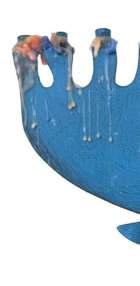




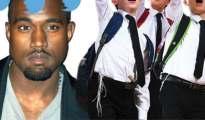


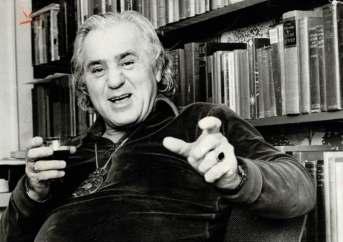
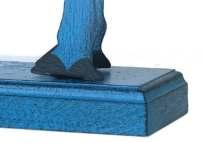




In 1999, at the ripe old age of 27, Toronto-born photographer Naomi Harris decided to follow her ancestors and head south for the winter, becoming Miami’s youngest snowbird. Haddon Hall is now a published photobook, and the cover story in this issue. Naomi is pictured here with her rescue shitzu, Maggie.
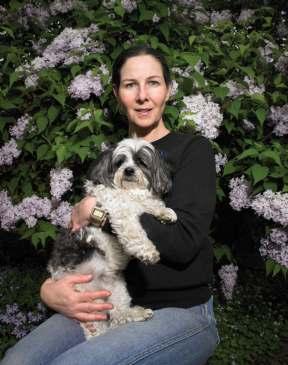
Daniel Ehrenworth is a commercial photographer and video director based in Toronto, Montreal and NYC. He spent his formative years at Hillel Academy in Ottawa failing just about every Hebrew test given to him. He likes colour, the Muppets, his family, not going to the beach, and jube jubes.

The CJN’s senior editor Phoebe Maltz Bovy is also a contributing columnist to the Globe and Mail, the co-host of the Feminine Chaos podcast, the author of a book about privilege, and the writer of a newsletter about British sitcoms








Why the Moose Menorah became our mascot

Ukrainians and Jews have lived as neighbours for a millennium on the territory of modern-day Ukraine, creating and sharing enduring cultures that continue to inform their identities today. Ukrainian Jewish Encounter (UJE) is proud to present Part 1 of an integrated timeline of these two peoples in the belief that there is much to be gained by viewing their historical experience together, in all its complexity.

Ukrainian Jewish Encounter, a Canadian charitable non-profit organization, was founded to deepen understanding of the breadth, complexity, and diversity of Ukrainian-Jewish relations over the centuries, with a view to the future.


ukrainianjewishencounter.org


Marie Levine of Ottawa took menorah-making into her own hands after noticing that the menorahs at the synagogue gift shop she was managing were mass-produced and lacked a local connection—which didn’t offer any inspiration beyond a cheap place to plant candles. Now she’s applied her vision to reinventing the commemoration of Hanukkah.
 PHOTOGRAPHS BY VICKY LAM
PHOTOGRAPHS BY VICKY LAM
The initial challenge of supplying Kehillat Beth Israel with original Judaica that Ottawa residents would want to buy supplied Marie Levine with a spark.
Rather than pieces that get tucked away after eight nights, her goal was to create menorahs to look at all year long, each one a progression of art that moves from darkness to light.
A shattered style was inspired by the Hanukkah story showing that war can both destroy and create freedom. Vertical stripes reflected the garment given by Jacob to his son Joseph—with black lines representing the jealousy of his brothers.
Constant experimentation with new fused glass techniques has relied on more expensive material from Mexico, because factories that produced it in Canada and the U.S. shut down.

“I’m drawn to glass as a medium because it’s simultaneously fragile and strong and it sparkles when a flame is put close to it,” says Levine. “The darkest days of December can be so much more special with a beautiful lit menorah beside you.”
But a lengthy design process also leads to occasional rejection. When a technique hasn’t worked out, she repurposes the glass into pebbles designed to be left behind at gravestones.
The operation originally named Menorahs by Marie is now called the Glass, Wood, Resin Boutique, as her husband Howie Levine—a retired dentist—started making menorahs out of other materials after a few years of being surrounded by her designs.
“It was only natural for him to allow his creative juices to surface, too.” n
Menorahs courtesy of Gardiner Museum Shop
artists,whichMariefirst noticed while visitingtheLouvre in Paris.
forThegreentriangleisacompositionalelement
forAfavouritemenorahthatsatinMarie’sstudio yearsbeforeshecouldfinishit,usingminimalpowderedglass,lineandcircles.
An expert artist in fused glass, Patty Gray, designed this square and rectangle bubble pattern.
Pointillismisasource offascinationwithMarie,whoappliessmall acoloureddotsofglasstoform rainbowpebbleimage








Avi Finegold on the year’s top hot takes.
Check out the complete catalogue of episodes at thecjn.ca/bonjour
The CJN’s current affairs podcast had its first full year of weekly episodes,
Drescherhigh costs of keeping kosher in Canada
 Fran
Fran
The star of The Nanny visited Vancouver in September for a conversation about mental health to kick off the local campaign season. Toronto took a more conservative route: Stephen Harper speaking alongside George W. Bush. We debated whether the galas are worth the cost.
Four years after it became legal in Canada, a homegrown honey apple kush was released with rabbinic approval, while blurring the lines between chai and high. But for all of the enthusiasm for legal weed in the Jewish community, you still can’t find edibles that are certified kosher.

cake breakfast. We also got a glimpse at the “Little Synagogue on the Prairie,” which was built in 1916, and relocated in 2009 to Heritage Park in Calgary as a historical monument to the original community.
Quebec’s new language law became official on June 1, which meant any rabbi relocating from outside the province would be required to get their children educated in French after a three-year grace period. The issue also highlighted how rabbis born and raised in Canada remain hard to find.

Russia’s invasion in February roused an immediate community response which, on second thought, involved its share of disas
As usual, Jews got stuck in the middle of the conflict, which also led us to ask Bob Rae’s view on whether to call it a genocide.
The anthology subtitled “Jews, Canada and the Sense of Belonging” was edited by our prolific professor guest, David Koffman. It’s a challenge for most of us to explain what makes Canadian Jewry something special— although you can count on newcomers to this country to remind you it’s true.
We’re All Gonna Die was the name of the Montreal actor’s recent documentary series, which explored the science behind the ways that the human race could end—and he contemplated how his heritage influ

A podcast dedicated to Jewish current affairs meant talking about the rapper whose social media comments led to cancellation. But we also wondered if Jews are actually the most targeted group for hate crimes—or if we just happen to call the cops more.

An all-star cast of 20 joined in our maiden effort to sonically celebrate Passover around a virtual table, including contributions from Edmonton Oilers left-winger Zach Hyman, political journalist Evan Solomon, and former Bonjour Chai co-host-turned-MP Melissa Lantsman.

Viral celebrity status arrived for the Orthodox boys from the 45-year-old singing act that Yerachmiel Begun originated in Toronto. Mordechai Levovitz, a former member of


MBC who now works for an organization empowering Jewish queer youth, explained the appeal.


From matchmaking services like Yente Over the Rainbow, to conflicting opinions on interfaith marriage, relationship talk never gets stale.
A recording of a sex talk given to a Hasidic groom before his wedding also gave us a unique peek of what happens under in the holiest of bedrooms.

Rabbanit Rachael Turkienicz won the first Great Canadian Sermon Slam, a competition between Jewish clergy who shared words of wisdom for the High Holidays. She’s now the holder of our trophy—even if we still need to get around to having one made and engraved.




















Hot Rabbi by Aviva Blakeman is one of a new wave of bodice rippers that are leading readers to exclaim, “I’ll read what she’s reading.” The Rabbi Who Prayed with Fire, by Rachel Sharona Lewis, further raises the temperature with a leather-boots-loving lesbian named Rabbi Vivian.



 Miami Boys Choir
Kanye West
Miami Boys Choir
Kanye West

These aren’t classes in the old-fashioned physical sense. And the learning is classy.
Classi Learning, based in Toronto, is different from other online classes and courses born in the Covid pandemic: Founder Sue Walsh launched Classi Learning, a niche operation, geared to her personal passions: the arts, history, travel, opera, music, film, Jewish history, and interviews with authors.

Sue started the venture when the pandemic began and she found it hard to find quality lectures on the arts and history, “especially Jewish history, in an understandable format.” Covid’s lockdowns and restrictions provided an added impetus. Sue couldn’t go out and enjoy cultural events, “and the next best thing was to provide information to others in the comfort of their homes.”
Lectures are terrific! Content and delivery is important to Sue so those registered stay engaged and return. To date, Classi Learning has reached several thousand students across North America and the


United Kingdom. The classes last 50 minutes, followed by a 10-minute question-andanswer session, usually moderated by Sue. Best of all, there’s no homework.
Individual lectures are $10-$12, or $30 for a series of three. The membership program is $100 for three months, which works out to about $6 per lecture. Members can come to any program. Just Opera is separate “I love thinking of great topics and finding excellent speakers,” Sue says. Some of the most popular courses are Art with Patrick Bade; Opera with Iain Scott; Jewish History with Trudy Gold; and Book Reviews with Cathy Tile. Jewish history, Sue says, “is really important to me so that we learn our own history and can explain it to others. There’s so much misinformation and lack of basic knowledge of Jewish history.” Classi Learning offers a series titled “The Wandering Jews! How did we get around the world?” Past courses have examined the histories of Jews in Britain, America, and Germany.
Instructors are experts in their field who
Details are at classilearning.com; email at info@ClassiLearning.com or call 647-205-4411.
have a passion and can communicate. Sue, whose Viennese parents nurtured her love of learning, says, “I don’t teach. I just love to learn!”
Classi Learning’s goal is to spread knowledge but also “to stay positive and build a wonderful community with you who love the arts and learning,” Sue says.

1960-1971 1971-2014 2014-2020
For the first time in its 63-year history, The Canadian Jewish News can accept charitable donations, as one of the Canada Revenue Agency’s registered journalism organizations. More information can be found at thecjn.ca/support or email us today at support@thecjn.ca


Keeper is the name of an app that makes it possible to access multimedia stories about a deceased person with the scan of a phone. It was designed by Montreal native Mandy Benoualid, a former assistant funeral director who moved to Hamilton with her husband, McMaster University religious studies professor Jeremy Cohen. The couple also run a website called Talk Death, as part of their goal to bring greater communication to the end of life.

The first Jewish lieutenant-governor of the province started the job on Oct. 24 with a swearing-in ceremony that highlighted her heritage. Neville is a former politician who chaired her local public school board before she spent 11 years representing Winnipeg South Centre for the federal Liberals. While she wasn’t initially sure about another public role, her grandson Aaron convinced her after asking, “How could you not take the job? How many people get the opportunity?”
Leopoldstadt is the new autobiographical play by Tom Stoppard, which takes its name from the Jewish quarter in Vienna, with a narrative that starts in 1899. A cast of 38—for the two-hour show that opened at the Longacre Theatre on Oct. 2—includes the Hamilton-born star who played Elsa in Frozen on Broadway. Levy’s first taste of the stage came from Hebrew-language musicals at Camp Ramah, but she identifies more with her current role as Eva Merz Jakobovicz.

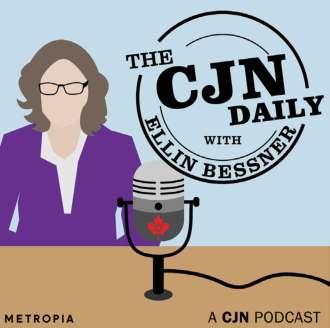

The story of a piece of luggage belonging to 13-year-old Hana Brady, a Czech Holocaust victim, first gained attention via The Canadian Jewish News when her older brother George was found living in Toronto. Curiosity that started with a museum curator in Tokyo led Karen Levine to write Hana’s Suitcase, a children’s book published in 40 countries that inspired a stage play and a documentary film, all about exploring how one girl’s life was turned upside down by the Nazis.


Noam Lowenstein and Asaf Porat were the pilots for the airline’s last scheduled journey from Toronto to Tel Aviv. The reasons for El Al discontinuing the route remain officially unexplained—which has led to speculation of its revival. But if this red-eye flight of the Boeing Dreamliner 787 (named “Hod HaSharon”) on Oct. 27 ended a half-century of service between countries, then we witnessed a little bit of history alongside several sentimental passengers.

A

longtime freelancer for The Canadian Jewish News, host of a Jewish television show in the 1970s, and the public face of COR (the Kashrut Council of Canada) in its early days—she died Nov. 9 at her Toronto home after a year-long struggle with the after-effects of COVID.
A community volunteer who served on many boards and committees, and the matriarch of a large extended family, Cynthia Gasner was known for her warmth, support of younger colleagues, and a seemingly bottomless well of energy, determination, and willingness to take on new challenges.
A trailblazer as a working mother and sometimes the lone woman on volunteer boards, Gasner served as the first female on the Baycrest Executive, where she was vice-president for three terms, and was part of a group of women who successfully fought to obtain voting rights for married women at Shaarei Shomayim. She also served on the boards of the Lands of the Bible Archaeology Foundation and the Canadian Shaare Zedek Hospital Foundation.
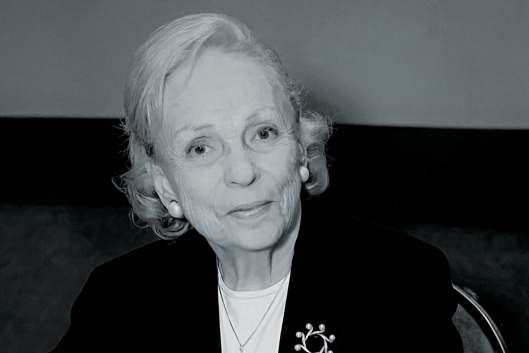
The daughter of Polish Jewish immigrants, Gasner—born Cynthia Goldie Kleinert—studied accounting in high school. One of her early jobs was as controller of the then YMHA’s Camp Council. It wasn’t until her second daughter reached university age that she pursued post-secondary education herself, taking 12 years to complete an honours BA in Political Science. She also earned a certification in public relations from Ryerson University.
Raised in a leftist home, Gasner embraced Orthodoxy when she
married in 1952. She credited memories of her pious maternal grandmother for her influence in that regard.
It was under her father-in-law’s chairmanship that Gasner served as public relations officer of the Orthodox division of Canadian Jewish Congress—as COR was first known, updating its kashruth directory and reaching out to homemakers, food companies and retailers.
Read more at thecjn.ca/cynthia

A champion of higher education and affordable housing in Toronto, the city where his family settled after fleeing looming Nazism in Poland, he and his wife Myrna went on to give more than $30 million to the University of Toronto—from which he graduated in 1950 with a bachelor’s degree in architecture.
John Daniels, who died on Oct. 22, made his first foray in real estate while he was still a student, building a few houses with borrowed money. He would go on to become CEO of the Cadillac Fairview Development Corporation.
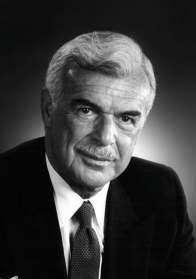
In 1983, he left Cadillac Fairview to start the Daniels Corporation, which was behind numerous residential projects in Canada, including Erin Mills in Mississauga. The business worked with the government to build thousands of non-profit rental units, founded the First Home communities geared to first-time buyers, and revitalized Toronto’s deteriorating Regent Park public housing project
In total, Daniels and his wife gave over $200 million to educational, health care and cultural causes. One of his earliest interests was Associated Hebrew Schools of Toronto, where his father taught. The younger Daniels was its architect and fundraiser.

He didn’t quite come from rags but his ability to turn them into riches became legendary, as the leading man of suits in Montreal.
Alvin Segal, who died on Nov. 4, was also a leading spokesman for the Canadian apparel manufacturing industry, helping shape government policy.
His wealth allowed him to become an outstanding philanthropist. His family’s $24-million donation in 2005 to the Jewish General Hospital for the creation of the Segal Cancer Centre was one of the largest of its kind at the time.

But he will probably be best remembered for his rescue of the Saidye Bronfman Centre—now the Segal Centre for Performing Arts—a couple of years later, motivated largely by Segal’s infatuation with Yiddish theatre.
Segal has been called a visionary entrepreneur and one of the most knowledgeable people in employing technology to produce fine apparel. Segal’s foresight served him and the struggling garment industry in Canada most spectacularly in his recognizing what a boost free trade with the United States would be, opening up a market 10 times the size of that in Canada.
The architect of the Four Seasons Centre for the Performing Arts, Corus Quay, St. Michael’s Hospital and Holy Blossom Temple in Toronto was also responsible for Montreal’s Maison Symphonique and the University of British Columbia medical school.
Internationally, he designed Israel’s foreign ministry building and the Jerusalem City Hall and the Mariinsky II opera and ballet hall in St. Petersburg, Russia. One of his last projects was the United Kingdom Holocaust Memorial in London in 2016, in Victoria Tower Gardens near parliament.
Jack Diamond, who died on Oct. 30, was born in South Africa into a family from Lithuania where his grandfather was murdered in a 1917 pogrom.
After studies at the University of Cape Town and Oxford, he began his practice in South Africa. He then taught at the University of Pennsylvania and, working with the towering Louis Kahn, in 1964 he established the Master of Architecture program at the University of Toronto. Early on in his new home, Diamond made his mark as an urban planning reformer, urging the revitalization of older neighbourhoods and warning against suburban sprawl, an expertise the Ontario government would call upon in the development of the Greater Toronto Area.


The CEO of Ben-Gurion University Canada was still fulfilling his role as enthusiastically and effectively as ever when he died on Nov. 14. It was a position he held for the past 12 years. Previously, he spent 17 years as the executive director for Jewish National Fund of Eastern Canada.
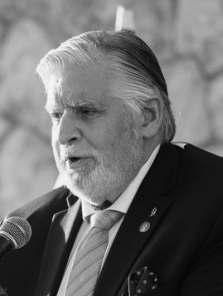

Mark Mendelson was a larger than life figure—physically and in personality—who lit up a room. Recognizable for his signature navy blazer and moustache, he was ebullient and convivial, loved good food and wine, art and entertaining. His skill at cooking is mentioned by all who knew him. Foremost, he was a family man, taking tremendous pride in his children.
He put this energy and creativity to work for BGU Canada, expanding its presence across the country and increasing the amount of money raised. He reported to supporters recently that the organization had had a record financial year—and this despite the limitations of a pandemic.
Although he came to it relatively late, Mendelson earned a reputation as a consummate Jewish community professional and a stellar ambassador for Israel.













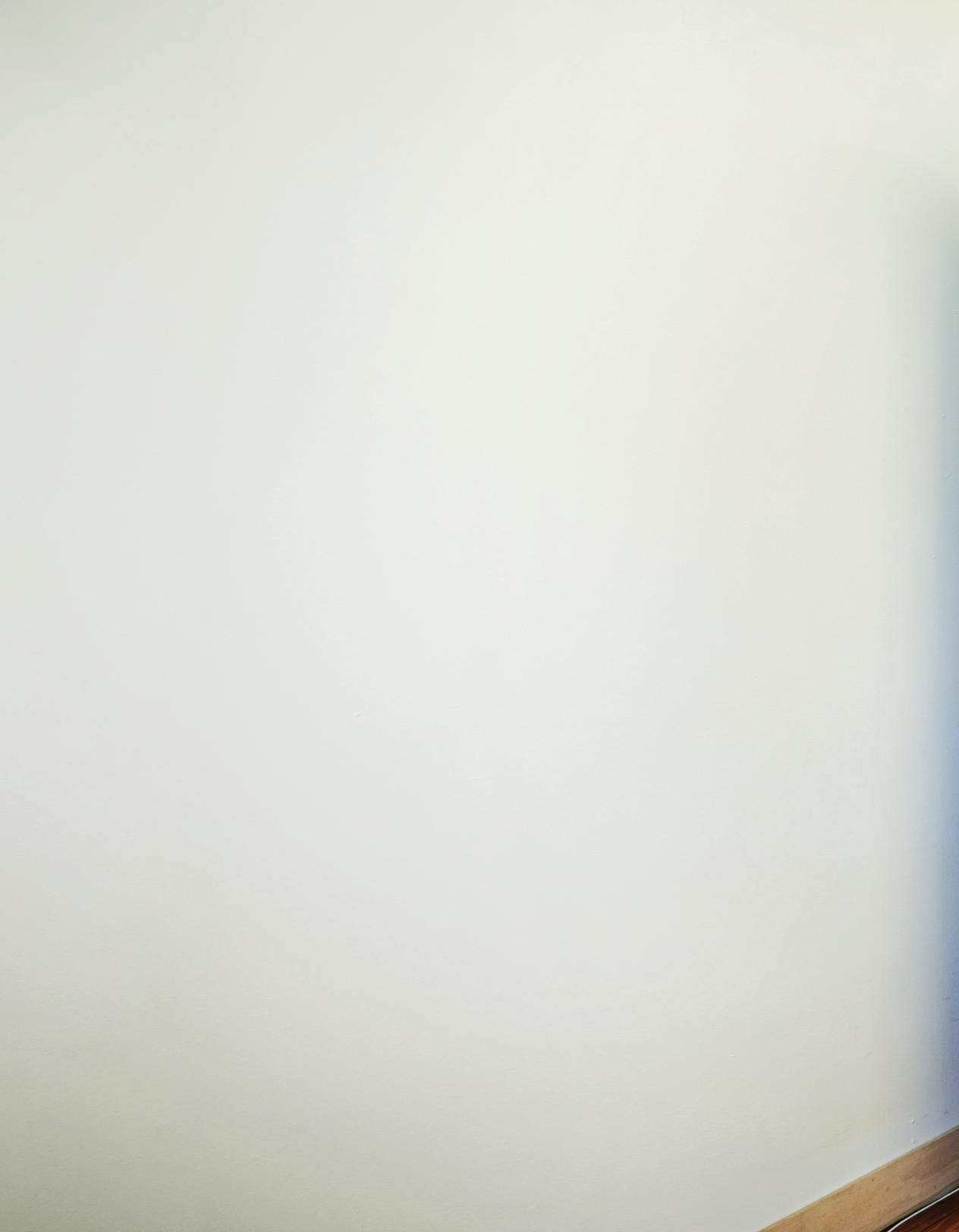
Two good friends squeezed into a tiny room to record a conversation about the challenges of a screen-dominated life, timed to the publication of Sax’s new book, which is subtitled How to Create a More Human World. It’s about how physical proximity is an essential part of appreciating experiences, including Jewish ones. Restoring these connections might come in handy should you find yourself in need of a minyan or, at the very least, a poppyseed danish.
Their jousting at Canadaland’s Toronto studio was edited and condensed by Phoebe Maltz Bovy.
Brown: I think Jews are digital, not analog.
Sax: If only.
Brown: I think I can back this up. I think that Jews are digital from before digital. If we understand Judaism as a network of information that was detached from any kind of physical analog. We revere the book. Not a fetishization of the Torah. But it’s the words themselves. In Judaism, ideas are what’s valued, and communication is what’s valued. Jews don’t have a lot of reverence for the physical.
I know there’s evidence to the contrary, and that there are Jewish laws about nature and the physical world. But I’m going to put this thesis forth anyhow, that consideration of the life of the mind and the soul, and of morality, and of the law, and outside of the religious aspect, finance and credit, given that we weren’t allowed to do a lot of other jobs. These are all digital concepts that predate digital technology. It’s hard for me to find the common ground between that and what you’re putting forward.
Sax: Can you be Jewish by staying at home alone? By reading the texts of the Torah and wrapping your tefillin alone? Is it like Buddhism, or a type of meditation, or even a type of Christianity, where, regardless of where you are, and who you’re with, you can be Jewish? And you can do those rituals, and that will give you the meaning? Everything you need is in the words, it’s all there in the Torah, it’s all there in the five books plus the Talmud and Mishnah. In theory, you should be able to do it. But there is a requirement, in Judaism, for embodied, in person community. The commandment of a minyan, a minimum of 10 people, is the essential core of that thing. You can celebrate Shabbat on your own, but it has more meaning when you
do it with other people. You can celebrate the holidays in some way that’s personal, but the meaning, the community, the identity, the strength of it comes from that embodied presence. You can believe in Israel as a state or a symbol or the center of Jewish life, but the meaning comes from going to Israel, from going and standing and touching the wall of the Kotel and actually being there.
Brown: You lost me with the last one. I think you’re right that Judaism is designed in a certain way to be very portable, and we don’t make a huge deal about the temple itself. Anything could be a synagogue, but you need Jews, you need Jews to be Jewish.
Israel actually is like a bit of a…
Sax: Let’s skip Israel.
Brown: No, it’s interesting, because it is about physicality, and about analog. And that’s maybe where we run into trouble.
Sax: What is Birthright? It’s not just, yes, Israel, you love Israel, whatever, but it’s, come to Israel, actually go to Israel. It’s not a commandment in the way that Muslims have the commandment to do the hajj. But Judaism without the embodied presence,
David Sax, author of The Future is Analog, talks to Canadaland podcaster Jesse Brown about reviving reality.
without groups of Jews, without the community is a set of shared genetics and the inability to digest certain foods. And texts, and maybe a shared history.
Brown: I think that the things that a lot of Jews prioritize are going to be about frame of mind, a sense of humor, a shared culture and history. What you write about are these things that are so sensual, and sensory. And that’s very important to me. It feels like Judaism is in opposition to things, and sensual experiences. It’s a life of a mind kind of a thing.

Sax: But what is the life of the mind? It comes from those lived experiences. Imagine someone who is born to a Jewish mother, and they grow up on a desert island. And then years later, they’re plucked from that desert island, they’ve lived there alone, eating coconuts, kosher coconuts, obviously, and whatever else. And they’re brought in the world. All those things that you talk
about, those values, the embodied sense of humor, the mannerisms, the dietary tastes, all the things that we identify, in a very broad sense, with being Jewish or Jewishness, whether it’s religious or cultural or otherwise, where does that come from? It comes from those experiences we have in the real world. Where does this sense of humor come from? It’s not something that’s like passed down through our genes, like Tay-Sachs. That was a joke.
It comes from spending time around people who have that sense of humor, and the time you spend in physical space with them. It’s
something that’s woven into your sense of being.
Could you get it digitally? Could you have someone who grew up in rural Mali, and sit them down and show them every season of Seinfeldand every Mel Brooks movie, and all of a sudden, they’ll sort of get it? Yeah, I suppose you could. But so much of what we get from the Jewish experience is that actual experience and it’s not something that you can detach from physical embodied reality.
Brown: It’s interesting for somebody to be so right. And yet, so inevitably defeated. It’s
a crusade that’s already lost.
Sax: Like a windmill that I just keep tilting against.
Brown: Yeah. You can nod along to every idea. We all know this, and it helps to have it articulated that we we’ve gotten so far from the things that matter most. By accident, by the fluke of a virus, we’ve rediscovered the importance of walking in the woods, which I’ve done with you many times in the last few years. People were discovering that, oh, there’s a simple pleasure to baking bread,
and doing it in the way that it’s been done for hundreds of thousands of years. It’s worth inhabiting physical space with one another. You and I have gone on walks in the frigid cold at night, just because we just miss being around each other. Or just being around other people. And no one else was around that night.
You write about some of the etiquette behaviors that have been lost, due to technology.

If you’re having a conversation, you don’t go and look at some other conversation because just somebody happens to have dinged your device. We’ve forgotten that,
and we’ve let these devices run roughshod over us. So yeah, I’m just vigorously agreeing with everything. But I’m like, Yeah, but good luck, buddy.
Sax: There’s TikTok out there. And it’s tasty. The book is not an attempt to reverse the sort of flow of evolution and progress, it’s a way to redirect it. Let’s stick to Jewish life. At the beginning of the pandemic, and during various parts of it, because I think non-Orthodox sects of Judaism are still amongst the most cautious, COVID-fearful, groups. If you want to go and see places where everybody’s wearing a mask, out of an abundance of caution, in 2022, go to a Reform synagogue, or an independent bookstore. They’re still doing that. And there was this time, in the early pandemic, when it seemed like this was it, this was the future. You can tune in to any shul you want in the world, sitting at home on a Saturday morning, or Yom Kippur, or whatever. And you can stream that, watch that. And it
is incredibly convenient. It’s like the old joke of the two Jews on the desert island. Now you can find the shul that you like, and the shul you don’t like online, and stream one and have the other one blacked out on the other screen, just to spite it. And it’s it was, it’s super easy, it’s so much easier than schlepping yourself to school and putting on nicer clothes and sitting on, hard pews or hard chairs for two hours and having some sort of dry honey cake afterward. But for most people, that is and was insufficient. And so going forward, did people say okay, this was predicted to be the future of Judaism, more virtual more online, it’s going to be easily streamed? For most congregations, the future is now going to be more in person. Maybe they’ll have a streaming element for those who are elderly, or those who are unable to come in or those who are sick. But in the sermon of my rabbi, at Rosh Hashanah, it was, we have to relearn how to be together in person, because that’s the strength of it. Otherwise, the community sort of withers and dies off online. That’s what people come for is that presence. And so is it tilting against history and a losing cause to say this actually matters? Or, you know, doesn’t make a difference? Is that going to stop other people from opening up virtual shuls? No, and nor should it? Like, if that’s an option for people great, but…
Brown: It’s not great. It was terrible. Virtual services were terrible. Virtual bar mitzvahs, virtual brises.
Sax: Virtual shivas.
Brown: Virtual shivas were the worst. It’s tragic, people who were denied that.
Sax: Five, six years ago, people working for a Silicon Valley company were like, we should do a virtual shiva app, because sitting shiva is a really inconvenient to do.
Brown: It’s supposed to be inconvenient. It’s supposed to be too long, so that you don’t
leave the mourner when they’re still... The mourners should be like, get the hell out of my house. It’s enough already. That’s the whole point.
Sax: Your son is having a bar mitzvah in two years. He’s working. He’s studying, he’s learning. He’s putting in the effort to physically go and read from that text, that piece of, you know, goat skin that’s been stretched and dyed. Or maybe they do a vegan one at your shul. And hand copied out by a scribe. And it’s not the words that he’s reading. It’s the act of that physicality.
Remember, once every couple Saturdays growing up, going to bar mitzvahs as a kid, there’d be one kid who just phoned it in. He’d read from a sheet of paper, transliterated, he or she couldn’t bother to do it. Or they’d just read something in English. And you’re like, No, no, cross out cross out the check. You want to be Jewish, you want to become a Jewish woman or man, you have to show up and do the actual thing. This notion that the future is inevitably going to be this easier, more streamlined thing may make sense in certain areas of my life, for ordering a taxi or recording audio in high definition, and being able to send it around to people. We don’t have to rush physical tapes of this conversation to The CJN. I’m not standing up for that. But for certain things, like what we’re talking about, embodied physical Judaism, is it going against progress to say this is what matters? Is it going against some inevitability to say actually, we really do have to make a concerted choice here about what our future is going to be? And how much this matter?
Brown: It was never my point of view that we need to digitalize Judaism and take all these wonderful technologies. There was there was a novelty aspect. Forget Israel, the real hajj was, oh, let’s Zoom into the New York synagogue for the holidays. That’s going to the real heart of things. And the choir is nice. In the limited capacity to which I actually go to synagogue, the whole point is, it’s got to
be physical, it’s got to be community. If your sense of Judaism has to do with words, if your sense of Judaism has to do with literature, if it has to do with law, if it has to do with it with spirituality, if it has to do with a sense of humor, these are all things that really don’t have much by way of physical embodiment. What has led to a certain to resilience of this culture is that we until recently, have not had much of a relationship to any particular geographic place. Soil is a very important thing in a lot of cultures. It’s never really…
Sax: Really important. They really don’t love us on their soil.
Brown: Some of the post-nationalistic aspects of human existence that have become a part of the digital age, we were the first around that. We were the first to have a community across the world before you even could use any kind of electronic communication. What united us to diaspora Jews all around the world was that we maintained a set of ideas.
Sax: I don’t disagree with you. But divorce those ideas from the analog physical rituals and spaces, divorce the ideas from the gatherings and the necessity and the commandments of getting together and doing the minyan… I have lived in other parts of the world. I’ve traveled. And it’s always amazing. Not that I see a Jewish reference somewhere, or see a mezuzah. The incredible thing is going to have a Shabbat dinner in Thailand with a bunch of Chabadniks. Or in Budapest with families that I’ve met there. Or when I was living in Argentina and going to shul there. It wasn’t the text, it wasn’t the ideas, it was the people. It was the people who were linked with those ideas. And those ideas and the people are inseparable in many way. But is it just the textual idea or the ideology or the cultural identity divorced from the thing that makes it?
Let’s pick a less religious example, a cultural example. Food.
“We were the first to have a community across the world before you even could use any kind of electronic communication.”
- Jesse Brown
I’ve written a book about Jewish delis. CJN readers may be familiar. You can now order, on Uber Eats or DoorDash or whatever, Jewish deli or kosher food from any purveyor. You want a Dr. Laffa laffa? Oh, we can get a Dr. Laffa laffa. You want a Panzer’s corned beef sandwich? We can have it here, it’ll be delivered. We’ll eat it, we’ll nosh, we’ll fress, we’ll joke. We can even make it at home. You eat it by yourself, but how is that experience different from inviting your friend over for Shabbat dinner or going to Harbord Bakery and getting in that line, waiting in that line, feeling the smells, being with the community, actually having that in-person experience. So let me tell you a story. Mid pandemic…
[To Brown] I see your mouth is opening, you want to say something but wait you’re gonna like this story.
I fled to my mother-in-law’s cottage for the first three months to get space or whatever.
And you know it’s up in Collingwood, there’s nowhere to get challah and if there is something called challah it’s an egg bread. So I got to baking challah. You know, we fight for yeast in the supermarkets and find flour. I’m pretty good. Second helpings. Great challah, very easy to do. Not the most beautiful braid, but it’s good, right?
We come back to Toronto a couple months later, go back downtown to the house. And my wife said, You going to make a challah? I’m like, No, no, I’m going to Harbord. At the bakery there’s a big line. Everyone’s in masks. Everyone’s you know, standing five feet apart. And I’m throwing all that extra stuff in the basket. All those delicious Israeli jams they have in like the tub of chopped liver that’s so good there. Fabulous chopped liver, if you’re looking for it. Right, I got my challah, I make sure I got a couple, of one for my mom, one for the cleaning lady comes on Fridays that absolutely loves her challah.
And there’s a woman in front of me, an older woman. And there’s a commotion at the cash when I’m about to pay. What do you mean, you don’t have poppyseed Danish? -We don’t have it today. I drove all the way down here. I drove all the way down here for that Danish. And for the course of five minutes she goes on berating the staff, just livid, the fact that she drove all the way down from I’m not sure but somewhere on Bathurst north of Harbord to get this poppyseed Danish. And finally she leaves in a huff. I walk up to the cash, you can tell they’re just worn out by this. And this Friday crowd, there’s like 20 people behind me like deep, breathing in their N95 masks. And I’m just like, Do you have any poppyseed Danish?
Brown: I’m really glad that you prevented me from cutting in there, because that was worth the ride.

Sax: Now that story, to me, was everything out of my Toronto, Jewish life. I was so glad that that woman had that kvetchfest about that fakakta Danish. Because that, to me, was that lived experience. And if I were to take that child from Mali, and bring them here and say, you want to know what my life is like, as a Jew in Toronto, come and stand in this place. Smell the smells, feel this bread. See these people, and listen to this woman lose her frickin’ mind over a pastry that she was so heartbroken not to get that she decided to hold up this entire line of people who are like already freaking out about being inside in unventilated space for this time.
There’s a point here and the point is, had I just clicked on the Harbord Bakery website in order to challah, I would have gotten the challah that would have been the challah, the challah would have been delicious. But the sense of identity, the culture, those ideas, all those things that were built up from that moment of being in there would not have been that. That was the point. n
“Now you can find the shul that you like, and the shul you don’t like online, and stream one and have the other one blacked out on the other screen, just to spite it.”
- David Sax



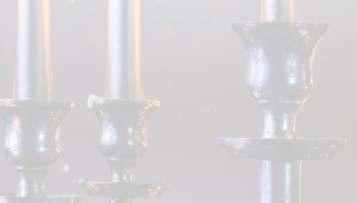




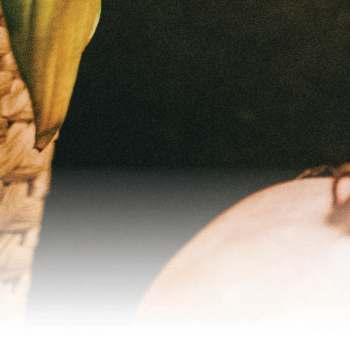















Imoved into the Haddon Hall Hotel when I was 26, in December 1999. At that age, I rarely gave the future a second thought, preferringtoliveinthemoment.Ihadnoideahow important that time would become for me.
Haddon Hall is like my first love—it felt new and exciting, with no preconceived notions about approaching a photographic project. I possessed the freedom and naiveté unique to youth.
Now, back living in Toronto as a middle-aged caregiver for my parents, I’m experiencing déjà vu.
Twenty years ago, I couldn’t have imagined a time when my parents would depend on me. Last summer, two weeks before his 85th birthday, my father died unexpectedly. I look at these photos now with a changed perspective and new relatability, having all these years of life experience behind me.
Therefore, these photos—which are part of a series newly published in book form—is an ode not only to the forgotten men and women of South Beach, Florida, but also to my parents, and to a youth that is rapidly becoming more and more distant.
Photographers typically choose to photograph the elderly in black and white, creating a sense of nostalgia and pa-


thos. I opted for Technicolor to capture the vibrancy of both the people and the location. Using a handheld flash added a pop, making the subjects appear more like supermodels than seniors.
I lived in the hotel for two months, enjoying the retiree lifestyle.

In May 2000, I relocated to Miami Beach, moving into an apartment of my own, though I continued visiting the hotel sometimes to take photographs but often just for the company. Despite the generation gap, I often felt I had more in common with Haddon Hall residents than with people my age. I liked going to the early bird special at Wolfie’s, playing cards and being in bed by 9 p.m.
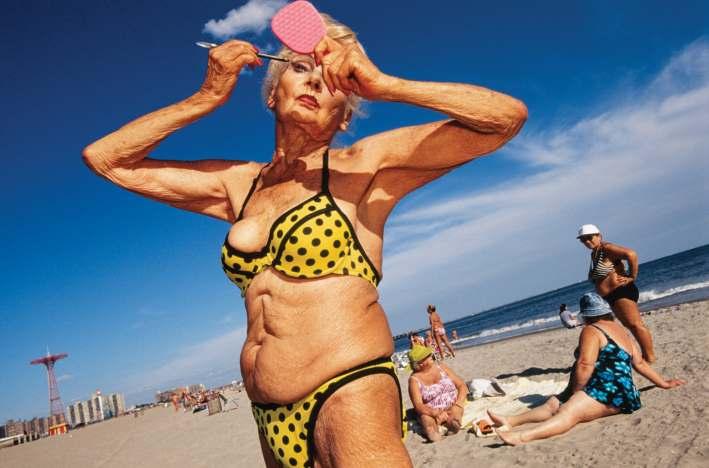
At Haddon Hall, the typical socio-normative roles existed: the popular girl, the comedian, the loner, the jezebel. The group dynamics brought to mind the same anxieties that plague us all, but with a senior twist.
The endless resident gossip, the mean girls who picked on a woman who used to wet herself; everyone wanting to sit at the cool kid’s table during bingo—it all felt sadly familiar. But the residents could also be kind and generous to one another, sharing snacks, picking up a prescription at the pharmacy or just lending a helping hand.

Using a handheld flash added a pop, making the subjects appear more like supermodels than seniors.
Despite the generation gap, I often felt I had more in common with Haddon Hall residents than with people my age.

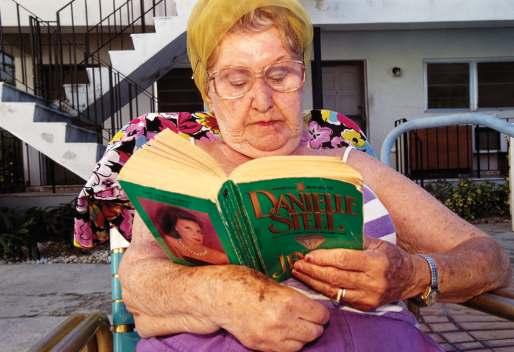
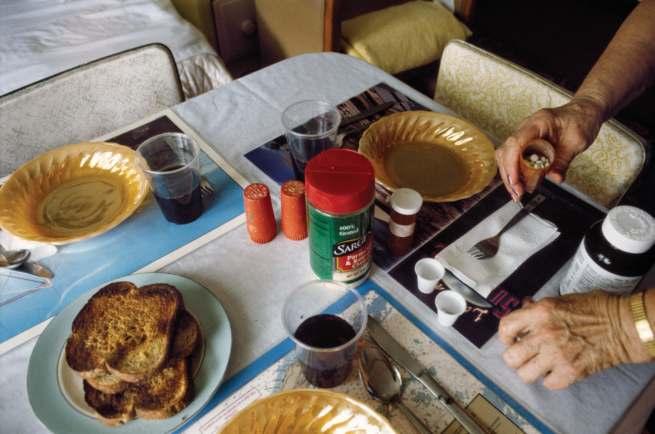
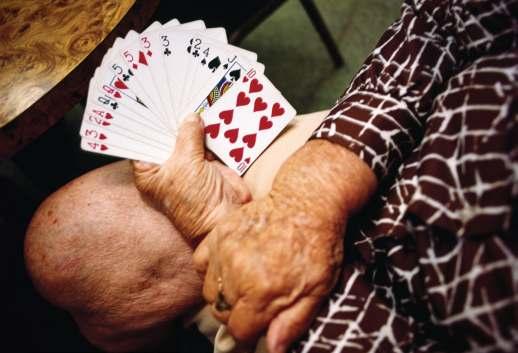

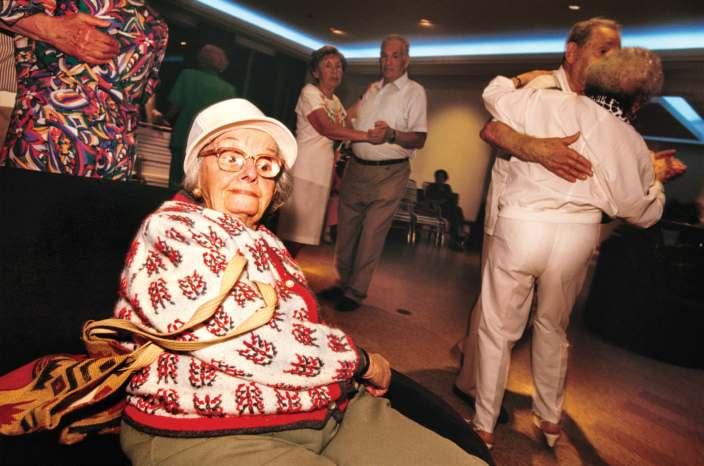
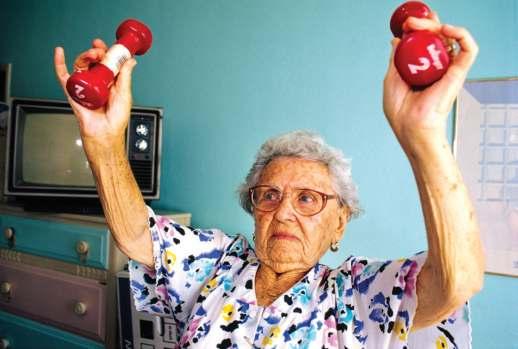

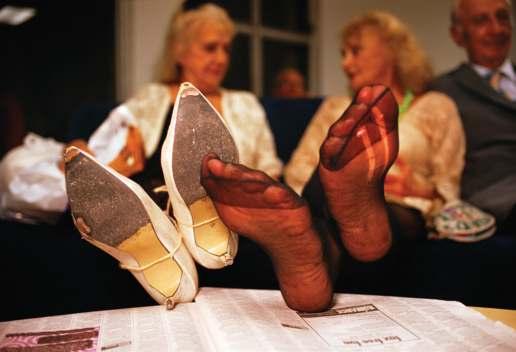

But with determination and tenacity, the seniors found ways to stay busy and add meaning to their day—and lives.Left Page: Jenny at the Dance, 1999; Leona Checking Her Blood Pressure at Fedco, 2001; Madeline Adjusting Bathing Cap, 1999; Gina and Friend With Feet Up, 2000; Ida Doing Exercises, 1999; Right Page: Sisters Getting Out of Ocean, 2000; Sisters Walking to the Beach, 2000
They showed me that we spend our lives being a parent, a partner and a useful member of society only to reach a stage of life where many of us fear we’ll be reduced to no longer having a sense of purpose. But with determination and tenacity, the seniors found ways to stay busy and add meaning to their day— and lives.

When I took these pictures at the turn of the millennium, I had no idea that I would also be documenting this epoch’s final days. Today there is not a trace left of this bygone era.
Flashy cars, upscale hotels and exclusive parties have replaced the shopping buggies, modest motels and cozy, friendly get-togethers that I can best describe as haymishe.

Haddon Hall, which once served as a humble haven for Jewish retirees, has changed ownership a couple of times. At last check it had been transformed into a boutique gay hotel.
And though the pool still exists out back and remnants of the original architecture remain, the former occupants live on only in my heart. n
CO-PUBLISHED BY MASA AND VOID (2021)
AVAILABLE FROM THE PUBLISHER: VOID.PHOTO/HADDONHALL ROONEY’S IN HAMILTON: SHOPROONEYS.CA PRINTS ARE AVAILABLE FROM THE ARTIST: NAOMIHARRIS.COM; INSTAGRAM: @MAPLEDIPPED










•
•








Aman got a Gucci bag as a gift from his in-laws. Not a fan of the designer purse in question, did he:
A) Graciously accept the present, then put it in the back of a closet and forget about it.
B) Regift it.
C) Sell the bag on eBay and donate the proceeds to charity.
D) Nail it to the outside of his house as a talisman against bourgeois materialism, then write a book of angry poems, called The Gucci Bag, about his dislike of his by-this-point former wife.
Montreal poet Irving Layton went with option four.

A rebel in his youth who changing times turned into a reactionary, Layton’s story has a familiar shape. Born Israel Pincu Lazarovitch in Romania in 1912, Layton and his family immigrated to Canada while he was still a toddler,
settling in Montreal. A bohemian artist emerged from a stifling religious bacground, bristling at the bourgeois. He published his first poem in 1941; by the time he died in 2006, aged 93, he was a CanLit celebrity, recognized for bringing the nation’s poetry out of its traditional pastoral serenity and into a rougher 20th-century universe of cities and frankly mentioned sex. His longtime friend Leonard Cohen gave a eulogy at his funeral.
As many prominent writers had done before, over that time he took a lover, then another, then another, and then suddenly he was an elderly man with like 500 different ex-wives, common-law and official, and scattered children from these relationships. Layton was a man with no patience for the domestic, and with a seemingly endless string of young women prepared to
ensure he didn’t need any.
For the past five years, the #MeToo movement has prompted reconsiderations of male artists’ monstrous behaviour, and of power-imbalanced romantic relationships. #MeToo is also, more subtly, a defense of female creatives, whose careers too often, have been cut short by abusive men, or just male partners who can’t be bothered with the housework. The pattern—exemplified by Layton—wherein an egotistical genius takes on a young, impressionable muse
What was it about the late Canadian poet that led multiple ex-lovers to write books about him?
A post-#MeToo reassessment of a renegade.
has gone from a shrug-eliciting cliché to Exhibit A of patriarchal immorality.
As memoirs by Irving Layton’s ex-wives reveal, some women willingly sign up for the life of a muse, or in less euphemistic terms, doormat. There’s something in it for them, something that a #MeToo analysis fails to capture. This is tricky: such nuances complicate #MeToo narratives and can, perhaps, restore to at least women some understanding of their own agency and choices. They can also be too easily invoked—a kind
of hand-waving that can suggest that maybe things weren’t so bad after all.
Also tricky: men like Layton often have many kinds of relationships with women over the course of their lives. Some are closer to fine than others, and some are clearly not fine at all. Tarring them all with the same brush risks obscuring the women themselves, and their distinct experiences, in the process.
Unsurprisingly, the women who were drawn to Layton for his strengths as
a poet tended to be writers themselves; their works about him could fill a healthysized bookshelf. And while they may not hold all the keys to Layton’s poetry, they do illuminate quite a bit about the man himself, and indeed of the role of the iconoclastic male artist in a post-sexual-revolution, pre-#MeToo era.
The first two of these volumes appeared in 1982. One came courtesy of Layton’s second wife, Betty Sutherland/ Boschka Layton, a visual artist, who channelled her Laytonian laments into

poetry, in The Prodigal Sun: “We’re not, Irving, merely strumpets / for your pleasure; we’re almost enough / your wives / to unionize, vote you out.”
The themes of all the Layton ex-wife lit are present here: the objections to objectification, paired with the insistence on keeping Irving central to the conversation. The reference to unionization, recalling the labour the role of Irving Layton helpmeet entailed.
Also in 1982 came Nobody’s Daughter, a novel by Aviva Layton, wife three. The Australian-Jewish coming-of-age novel is filled with frank talk of bodily functions, incest, and the pros and cons of being common-law married to a poet, featuring protagonists Anna Cohen and Alex Jacobs. Their resemblance to Aviva and Irving did not go unnoticed.
In one memorable incident in the novel, Anna describes urinating outside a car on a road trip with Alex. When she returns, “Alex is waiting for me with a poem.” As one does.
“With one wave of Alex’s magic wordwand I’ve been transformed from a weak-bladdered mortal to a goddess who rains her golden liquid into a parched and sterile world. … ‘I’ve made you immortal,’ says Alex.”
While some women might have had a different reaction, perhaps laughing, Anna “feel[s] alive, invested with meaning. Mythologized.”
In another scene, a phone call interrupts Anna and Alex’s love-making. He insists on picking up. “‘It might be God wanting to let me know he’s made me an archangel,’ says Alex. ‘Or King Gustav calling to tell me I’ve won the Nobel Prize.’... But it never is. It’s always some lady wanting him to read her latest poetic effort or to help with a paper on CanLit or to meet for ‘a cup of coffee.’”
The 1982 objections to male caddishness were not those of 2017. But even by the standards of that moment, an egotist who treated women poorly did not get a pass from the women in question, at least not once the relationships had wound down.
There are also more recent memoirs by wives four and five, Harriet Bernstein (Irving Layton: Our Years Together, 2019) and Annette “Anna” Pottier (As Good as Gone: My Life with Irving Lay-
ton, 2015), respectively.
For all the differences in particulars (Bernstein is Jewish, Pottier is not; Bernstein had a child with Layton, Pottier did not), their stories have a way of blending together. Both met Layton when they were in their 20s and he was in his 60s. Both knew and loved the poet before meeting the man himself. And both found themselves swiftly promoted from flirtatious friend to servant-spouse, a hybrid role in which they had to inspire and type his poems.
Writes Bernstein:
“I was his muse, his publicist, his lover, his protector, and then his wife, making a home for us, tending to our physical needs, to the daily business of living—the tedium of routine chores that he for the most part did not want to be bothered with at all—but still I was his student, still mesmerized by the power of him, the seduction of his words.”
ure in Canadian poetry and also something of an art monster. No one source is perfect. The exes have their axes to grind. A novel, even an autobiographical one, is, well, fiction. And Cameron’s biography includes a lot of speculation about how various real-life people must have felt at whichever moment. But reading them together, an image of Layton begins to coalesce. He runs off whenever he has a new baby. He makes his first wife sign a weightloss contract to stay married to him. He says things like, “‘There are three types of women: itches, witches, and bitches.’”
Cameron writes of Layton’s tendency to demand his meals from his wives via one-syllable grunts. “He’d come in and shout, ‘Dinner! Aviva! Tea!’” Aviva Layton’s fictionalized account is quite similar to what she’d told Cameron: “‘I’m here!’ bellows Alex as he bursts through the door after a week’s absence. ‘I’m here! Who called me? Who wrote to me? Where are my messages? Where’s my mail? I’m here!’”
Pottier, meanwhile, recalls the seductive way Layton asked her to move in with him: “‘Looks like you’re the new housekeeper!’” Not that she minded: “Normally, one works decades to obtain life’s tangible and intangible fruits—things like a national presence, a fully paid-for home, and a steady pension; there was a car in the driveway, PoetPuss the cat on my lap, four ready-made children (albeit two of them older than myself), and a stimulating life... What more could any 23-year-old want?”
Irving Layton: A Portrait, a 1985 biography by Elspeth Cameron, belongs on a different shelf. It provides the vantage point of a woman impressed with Layton’s work but not entangled with him (romantically or otherwise), and decidedly not under his spell. Cameron’s Layton is a significant fig-
“Many of Layton’s poems at this time reflect a profound dislike of women, even those he hotly pursued,” writes Cameron. She cites (in context) a poem with lines like “‘Women are stupid. / They’re cunning but they’re stupid,” and, “‘Women will never give the world a Spinoza / A Wagner or a Marx; / Some lab technicians and second-rate poets, yes’.”
Cameron strikes just the right tone in her response: “Such poems were not likely to speak to a generation that turned to Margaret Atwood for consciousness-raising about sex roles.”
Nor, one imagines, would the poems of 1983’s The Gucci Bag win over an even marginally feminist readership. Not with lines such as, “Lord, must I be punished and was it a sin / to have loved her fat ass and pendulous chin / her many folds and bulges and hanging tits… Because I once loved her fat thighs and fat knees / must I now sweat to pay my lawyer’s fat fees?”
Why did women put up with this?
The party line for #MeToo would be that Layton exploited them, even if that’s not how they understood it at the time. But did he? All of this was taking
The party line for #MeToo would be that Layton exploited them, even if that’s not how they understood it at the time.
place in late 20th century North America. These were women in educated, artistic circles, in major cities, living through the peak of second wave feminism. They had options other than poet’s doormat. Was he a sadist, manipulating women into lives they didn’t want? Or were these women grown-ups launching themselves head-first into a life decision that had tangible advantages?
Yes.
Certain people are attracted to the role of muse.
Some of it may be an ego thing: The poem is about me. But it’s also about the art. Muses feel themselves to be an integral part of the creative process, as
though they are artists too by virtue of their inspirational presence. Pottier is cleareyed on this front: “Seeing pieces of my stories dressed up and becoming part of Irving’s work thrilled me no end. Surely this was the writer’s life, and I was living it from the inside out.’”
Bernstein describes a similar feeling: “There was my love of Irving the poet, the creator, and my fascination with living with him, with being up close to that creative process, watching poems take shape.” By cooking a poet’s meals, weren’t they basically writing the poems?
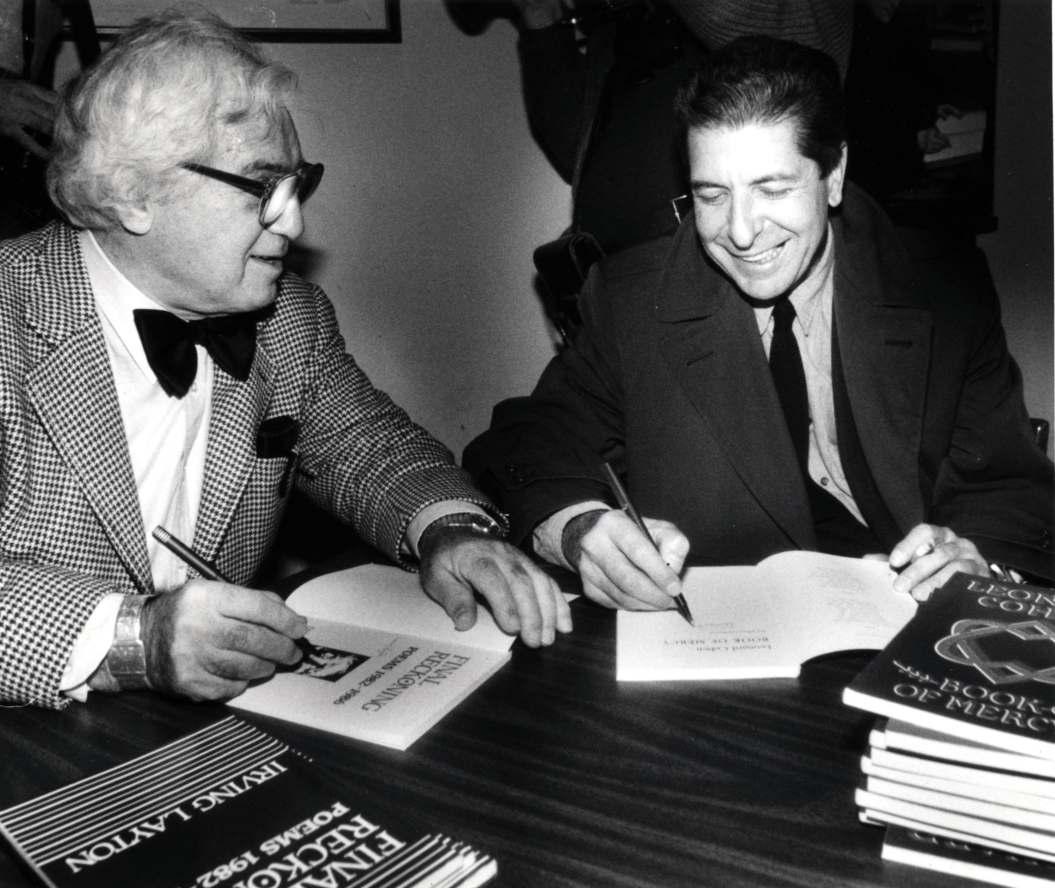
They weren’t entirely wrong. In 2016, Swedish writer Katrine Marçal published
Who Cooked Adam Smith’s Dinner?, a surprisingly splash-making book of economic history. In it, she explores how the everyday household labour of women—labour that makes men’s paid work possible—gets ignored in economic analyses.
So too with Layton: the wives made his output possible.
There were also professional advantages to being Layton’s plus-one, which meant having a spot in the Canadian literary scene. The memoirs include a bunch of star-struck name-dropping, even if apart from Leonard Cohen and Margaret Atwood, the names themselves are at this point obscure. Layton
was a ticket to a more sophisticated world, and to eventual bylines of their own: Aviva Layton already had a career as a children’s book author prior to Nobody’s Daughter, but were not for their romances with the great poet, it’s quite possible that neither Harriet Bernstein nor Annette Pottier would have had a chance to write books.
As a career move, life as a typisthousekeeper to a blowhard bigshot seems to have been a mixed bag. In one sense, it was a way to be at the site of artistic creation, without having to create art. (Not that Layton gave them time to do so while he was with them, which was its own point of contention.) Writes Pottier, “Everything I did to help Irving lent my life significance I could never garner working in some office.” There are, however, certain advantages to the “working in some office” route: “No school could teach me more than Irving, but employers rarely take such learning into account.”
Irving’s wives saw themselves as suffering for art. You don’t sign up for life with the Genius Artist in order to have a husband who does 50 percent of the laundry.
Layton’s unreliability contributed to his allure. His preferred dynamic was to be tragically torn between a wife and a mistress. The mistress would eventually take the wife’s place, leaving, as the saying goes, a vacancy, and the cycle would repeat. In Nobody’s Daughter, Anna describes seeing Alex as a “prize,” a pretext for competition among women. “Victory for me if I got to wash and iron the shirts. Victory for her if she gained possession of the intimacy of socks and underwear.”
And without elaborating on this point in a family publication, Layton was, per these memoirs, remarkably energetic, well into old age. So that probably entered into his appeal.
And Layton, for all his failings as a partner, did not, by their own accounts, ruin these women’s lives. Bernstein returned to the film industry and raised her child with Layton as a single mother. Pottier burnt out from being Layton’s caregiver once she was 35 and went on to have a career as a wrestler. Aviva Layton found another man, other work.
And yet.
While any individual anecdote about Layton’s behaviour could be brushed aside, once they start to accumulate one sees in them a master manipulator at work. This darker aspect of Layton’s character emerges in choices like Annette Pottier becoming “Anna” because Layton didn’t like the name Annette, which reminded him of a disliked relative. Or in asking Pottier to sleep elsewhere and pretend to be the housekeeper while he invited another lover to share his bed. Or in refusing Bernstein permission to purchase new clothes—and calling her a bourgeois materialist for even wanting to—while also not allowing her to have a job. Or in going on a trip to buy Aviva an engagement ring while still married to Betty Sutherland—and then outsourcing the task to Leonard Cohen.
oir, Pottier recounts Layton offering another writer “a titty-feel” as an 80th birthday present, catching the both of them off-guard. Bawdy or rapey? I vote for the latter.
And then there’s this, from Cameron, describing a 1978 Toronto Star photo of Layton in front of the Toronto Stock Exchange:
“His arms spread wide in a gesture of all-embracing exuberance, his widening girth bulged through his shirt and a huge silver medallion (which, he was soon to claim, was awarded to him in a competition in Morocco for deflowering fifteen virgins in half an hour) gleamed on his chest.”
The medallion story is repeated in Pottier’s memoir. I guess he really did go around saying this.
The most generous possible interpretation is that this was swagger, and not intended as literal boasting. But another possibility is that he did the thing he said he did. And it’s beyond far-fetched to imagine that these “15 virgins” in Morocco were consenting adults.
To be Layton’s girlfriend or wife was not to be his partner—not just in the sense of a 50-50, 21st-century-style balance (not that this is all that common even today), but even in a looser one that allows for however much adherence to traditional gender roles. He wasn’t merely the dominant figure in his relationships, or the breadwinner. He was more of a serial tormentor, enabled by a society that not only permitted such behaviours, but treated them as confirmation of a man’s artistic genius. A tormentor, and worse: In her mem-
We are no longer in the realm, then, of the artist as flawed human being. This is artist-as-predator territory. And no matter how sophisticated or nuanced or generous one might wish to be in one’s interpretation of his documented relationships, no matter how much agency one wants to allow the women in Layton’s life, it becomes exceedingly difficult not to draw a line between his actions in these different contexts.
It is why one must understand Layton-the-man not as a poetic bad boy, swashbuckling through adventures, so much as a domineering midcentury middle-class husband, demanding the washing of his socks, the prompt arrival of his meals. It’s banal, not Byronic, and lends his oeuvre whatever the opposite is of mystery. n
Books reviewed:
Irving Layton: Our Years Together. By Harriet Bernstein. (Inanna, 2019)
Irving Layton: A Portrait. By Elspeth Cameron. (Stoddart, 1985)
Nobody’s Daughter. By Aviva Layton. (Seal Books, 1982)
The Gucci Bag. By Irving Layton. (McClelland & Stewart, 1983)
As Good as Gone: My Life with Irving Layton. By Anna Pottier. (Dundurn, 2015)
We are no longer in the realm, then, of the artist as flawed human being. This is artist-as-predator territory.



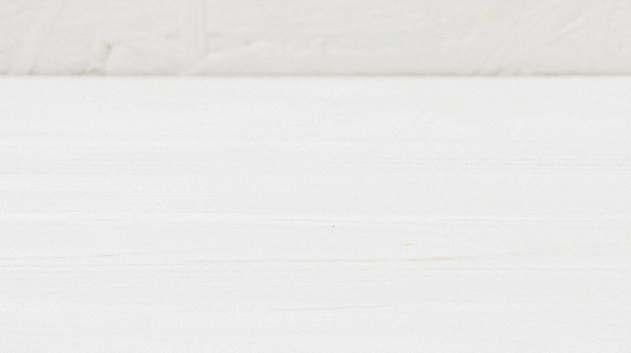


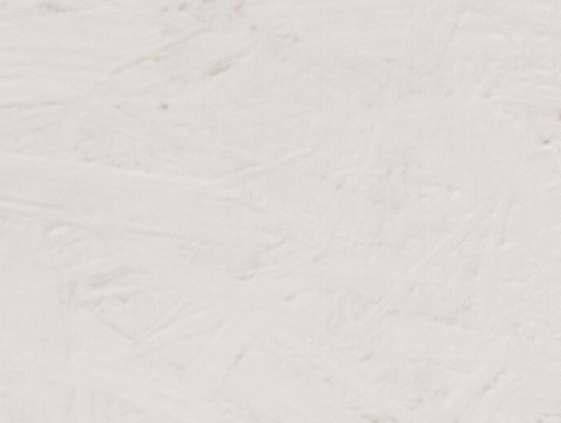

Adath Israel Congregation
Beit Rayim Synagogue & School
Beth David B’nai Israel Beth Am
Beth Sholom Synagogue
Beth Tikvah Synagogue
Beth Tzedec Congregation
Canadian Friends of Ezrath Nashim - Herzog Hospital
Canadian Friends of Maged David Adom for Israel
Canadian Friends of Yad Sarah
Congregation Beth Haminyan

Congregation Habonim
Hebrew Beach Institute & School
Holy Blossom Temple
Israel Bonds/Canada-Israel Securities, Limited
Na’amat Canada Toronto
Reena
Temle Kol Ami
Temple Emanu-El
Temple Har Zion
Temple Sinai
The Song Shul
Toronto-born author Isabel Vincent’s sixth book, Overture of Hope: Two Sisters’ Daring Plan That Saved Opera’s Jewish Stars from the Third Reich, is a Holocaust story with unlikely heroines—because rather than being glamourous seductive spies, Ida and Louise Cook were women who weaponized their frumpiness.

The sisters travelled from England, posing as the smitten opera fans they were—but used those trips as secret missions to help Jews emigrate from Austria and Germany. No one would suspect that these frugally clad fangirls were subverting authoritarianism. They just wanted to take in a show!
Overture of Hope is the story of two middle-class British ladies who stumbled into saving Jews from the Nazis. But it’s also the story of Clemens Krauss, the Austrian opera conductor—and accused Nazi collaborator— who put them on that path.
It’s a story with dramatic scenes of rescue and escape, but also with compelling ambiguities: Did Ida and Louise risk their lives to save Jews because it was the right thing to do, or was it more, to borrow a phrase from Meat Loaf, that they’d do anything for love— love of Clemens Krauss, and of the opera scene more generally?

And was Krauss an opportunist, a collaborator, a hero, or an all-of-the-above? It’s no surprise there’s a film adaptation in the works.
(Also in progress, but delayed due to the pandemic: a movie version of Vincent’s 2016 book
Dinner with Edward, to feature David Suchet, the British actor best known for playing Agatha Christie’s character Hercule Poirot.)
While stories of Holocaust rescue are heartwarming, they always risk erasing the unfortunately bigger story: gentiles doing the wrong thing, and Jews not surviving. Overture of Hope avoids this with references to the broader Jewish refugee crisis and the horrors that followed, and, more subtly, through the detailed explanations of hoops would-be refugees had to go through.
The value of the Cook sisters’ example is not that theirs is a feel-good tale, but rather that they offer insights into what drives some to choose good over evil or indifference.
Vincent grew up in a Portuguese-Canadian family, and attended a Toronto high school with a large Jewish population before her journalistic beginnings in University of Toronto student newspapers led to reporting for the Globe and Mail, the National Post and the now-defunct Saturday Night. Today, she’s a journalist for the New York Post.
But this isn’t the first of her books to touch on Jewish themes: Hitler’s Silent Partners: Swiss Banks, Nazi Gold, and the Pursuit of Justice (1997) won a Yad Vashem Award; Bodies and Souls: The Tragic Plight of Three Jewish Women Forced into Prostitution in the Americas (2005) won a National Jewish Book Award in Canada (In addition, Gilded Lily was the title of Vincent’s 2010 biography of billionaire Lily Safra, who died on July 9, 2022.)
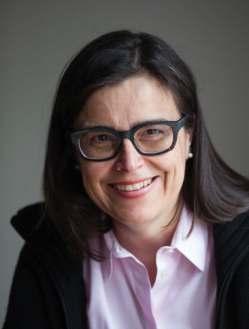 Journalist and author Isabel Vincent
Overture of Hope (Regnery Books)
Journalist and author Isabel Vincent
Overture of Hope (Regnery Books)
For those who have not yet read your book: Who were Ida and Louise Cook, and what’s their significance?

The Cook sisters lived in London. They became opera fans in the 1920s. At first both sisters worked as civil servants, as typists in the law courts. Ida would go on to become a romance novelist and, under the pen-name Mary Burchell, wrote 170 books. The sisters lived for opera, starting in their 20s. They would stand outside Covent Garden and line up for the cheap seats, and in so doing, they would see all these opera stars and conductors coming into the stage door and they shyly asked for their autographs or to take a picture with them.
This is how they met Clemens Krauss. Krauss was an up-and-coming Austrian conductor. He soon became Hitler’s favourite conductor. Hitler put him in charge of Munich State Opera, which was the jewel of the Third Reich cultural scene.

In the early 1930s, Krauss asked the sisters to help him save Jewish musicians and scholars. The Cook sisters were Church of England, and they’d never met Jews. They had no idea what was going on with the Nuremberg laws. And they said yes.
They knew absolutely nothing of what they were getting into, and in the end, they saved 29 families.
The sisters’ frumpiness is a key part of the story. You write that they were “forgotten for the very reasons that made them successful: they were unglamorous, largely anonymous.” How did plainness work in their favour? Louise was sort of beautiful, but they were unglamorous. They wore Marks and Spencer’s and Woolworth’s dresses. One of the things that they were able to do was smuggle people’s capital across the border because border guards didn’t give them a second look. They would take the jewelry that Jewish refugees entrusted to them, and they would plaster it on clothes. Set against their cheap dresses, they figured that it can only look fake. And so they did this in plain sight over and over again, and got people’s furs and jewelry out of the Third Reich. Jews leaving Austria and Germany had to give up nearly all their property. Some would sell their property and put the money into
jewelry, which the Cook sisters took across the border.
The Cook sisters also stuffed their purses with jewelry. They had a plan: if they were ever stopped and searched, they would just say, and this is their phrase, not mine, that they were “nervous British spinsters,” meaning, Well, we just don’t trust anybody to look after our valuables when we’re away, so we take them with us when we go to the opera.
Was Clemens Krauss’s first wife, Margarethe Abraham, Jewish? I ask because of the last name, and because it’s a possible explanation for his interest in saving Jews.
That’s a good question. I don’t know. If so, it may have entered into his thinking. But I also think that he was just really loyal to the people who were around him, and he got in trouble for that.
You write that Ida Cook defended Krauss against accusations of being a Nazi collaborator. The reality seems more complicated. He and his wife Viorica Ursuleac helped rescue Jewish refugees, but he cooperated with highup Nazis not just for survival but for his own professional advancement. Also, Ida and Louise Cook were infatuated with him, potentially clouding their judgement. Is Krauss better understood as a maligned resistance hero, or an example of the challenges of placing many historical figures definitively into categories of resistance fighter or collaborator?
Consider Oskar Schindler. He’s a very complex hero. He saves his Jewish workers. He’s also a war profiteer, making money off of the people he’s saving. It was similar with Krauss.
Krauss was he was never a member of the Nazi party. But he worked to take over positions other conductors didn’t want. He saw his opportunity. He wrote letters to Hitler’s secretary, asking to take over apartments abandoned by Jews sent to concentration camps. He wanted those apartments for musicians that he was bringing over from other parts of the Third Reich. There are all these things against him.
But then he does risk his life to save Jews.
Jews who were his friends, and whom he’d been loyal to for so many years. He was the one who came up with the idea of using opera as an excuse for the Cook sisters to travel to these different places to interview the refugees before they left.
I wonder if this was, after all, a bit of a love story, just not a traditional one, since it’s about two grown women with an unrequited crush.
I think they would have done anything for him. People told me that they were both completely in love with him. And with his wife. And in fact, when Ida writes her first romance, she dedicates the book to her. They were in love not only with the people but their artistry. These were women who lived in this world of melodrama and make-believe. Their own personal lives were pretty mundane.
Have you faced any backlash for writing about Jews when you’re not Jewish yourself?
No. I think a lot of people assumed I was Jewish. And I may have some Jewish background. Both my parents were Portuguese, from an area where there were a lot of hidden Jews. But I’ve always been interested in, more so than Jewish subjects specifically, man’s inhumanity to man. And the Holocaust is one of the most, if not the
most, horrible examples of that.
When I wrote my book about Jewish prostitutes, which is to say, Jewish women who Jewish mafia members had trafficked into prostitution, between 1867 and 1939, I wondered how this would be received within the Jewish community. And I just remember people being so supportive of it at the time.
Are there present-day equivalents to the Cook sisters? What would that look like?
I think of all these brave people in Ukraine. Recently I wrote a piece about a conductor in Kherson, Yurii Kerpatenko, who was killed because he refused to conduct a propaganda concert for the Russians. The whole invasion of Ukraine had so many overtones of the Second World War.

While reading, I found myself wondering if there was any artist I’m enough of a fan of that I’d drop everything and join a noble mission at their instigation. No one immediately came to mind.
I’m a Leonard Cohen fan. I don’t know—if he came up to me and asked… maybe there’s the answer to your question. If Leonard Cohen had said it, I might do it.
Now that I think of it? Rufus Wainwright. n





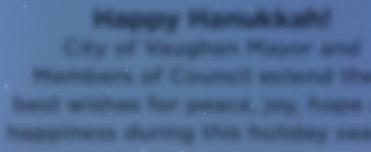































L’actualité la plus brutale a rattrapé les membres intrépides du « Groupe 9 ».
Marc Levy is the most popular French novelist of our time, and an ambassador for the Red Cross. His recent novel, Noa (Éditions Robert Laffont-Versilio, 2022) is about cyberhackers up against a Belorussian dictator.

Noa was finished a week before Russia’s invasion of Ukraine. The stakes of his story—part of the 9 series of novels—anticipate those of the war.
The rest of Europe will suffer If Putin succeeds in annexing Ukraine—not to mention democracy itself.
The novelist researched on the Cambridge Analytica data breach, which he interprets as an attempt by dictators from Syria to Russia to destroy democracy and create a new world order. He draws a connection to Republicans’ book-banning in the United States.
This allegiance between Putin and ultraconservatives is, he says, aimed at polarizing and radicalizing people living in democracies, through disinformation.
To counter this, schoolchildren should be taught that democracy is fragile and needs defending.
Marc Levy defends Volodymyr Zelensky’s use of the term “genocide” in reference to Russia’s actions, and says it dishonours Judaism to reserve the term for the Holocaust alone. He also compares Putin’s claim that Russia is liberating Ukraine to if Hitler had said he was saving the Jews.
Véritable phénomène de l’édition—50 millions de livres vendus, traduits en 50 langues—Marc Levy est l’auteur français le plus lu dans le monde.
Le voici de retour en force avec le troisième volet, Noa (Éditions Robert Laffont-Versilio, 2022), des aventures des héros hackeurs de sa passionnante saga intitulée 9—les deux premiers tomes se sont écoulés à 1 million d’exemplaires. Cette fois-ci, ces cracks du piratage informatique défient avec une hardiesse inouïe un dictateur impitoyable gouvernant d’une main de fer la Biélorussie.
Ce roman est aussi une ode poignante à la liberté des peuples à un moment charnière de l’Histoire où la démocratie n’a jamais été aussi fragile. Subjuguant et d’une brûlante actualité.
Très engagé dans l’action humanitaire pendant plusieurs années, Marc Levy est aujourd’hui Ambassadeur de la Croix-Rouge.
Il a accordé une entrevue à La Voix sépharade lors de son récent passage à Montréal.*
J’ai terminé d’écrire Noa une semaine avant que la guerre en Ukraine n’éclate. Je sentais poindre ce conflit, tout comme je sens venir une révolution en Biélorussie. La chute prochaine du dictateur Alexandre Loukachenko est un scénario de plus en plus plausible. Quand Volodymyr Zelensky martèle:« On ne vous demande pas de mourir pour nous, mais nous, Ukrainiens, mourrons pour vous », il dit la vérité. Si l’Ukraine triomphe sur la Russie de Poutine, les autocrates vont passer de très mauvais moments. Par contre, si Poutine réussit à anéantir l’Ukraine, le reste de l’Europe en souffrira énormément et le maître du Kremlin poursuivra impunément ses desseins impérialistes.
Vous avez mené une longue enquête avant d’écrire cette trilogie romanesque. Je me suis appuyé sur les travaux de grands reporters d’investigation qui m’ont inspiré les personnages du« Groupe 9 ». Un travail d’enquête très fouillé, né en 2016 de suspicions, dont les révélations ont été fracassantes : le scandale Cambridge-Analytica, qui a révélé que les données personnelles de millions d’utilisateurs de Facebook ont été collectées et utilisées à des fins politiques; les alliances scellées entre les oligarchies d’extrême droite anglaise, américaine et russe; les motivations de Poutine quand il s’allie à Bashar al-Assad pour massacrer la population civile syrienne afin de provoquer un flux migratoire pour déstabiliser les pays membres de l’Union européenne; l’ingérence de la Russie dans les élections américaines…
Cette déconstruction des démocraties a comme objectif de recréer un nouvel ordre mondial. Si ces despotes parviennent à leur fin, les 60 années de démocratie qui ont succédé à la Deuxième Guerre mondiale ne seront plus alors qu’une parenthèse dans l’Histoire. Après avoir interdit des livres qui les dérangent, ces ennemis de la liberté s’échinent à réécrire le passé. C’est ce que font aujourd’hui des élus politiques républicains américains.
L’avenir des démocraties vous préoccupe beaucoup. Indéniablement. La déconstruction des démocraties en tablant sur la désinformation et la division, c’est un projet de longue haleine mené avec entrain par la Russie de Poutine, qui s’est alliée aux mouvances ultraconservatrices, et surtout aux oligarchies du XXIe siècle. La phénoménale collecte de données, dont nous sommes tous l’objet dans la plus grande impunité, a permis, comme dans le cadre de CambridgeAnalytica, un microciblage des populations. Celui-ci avait une finalité précise : polariser des populations.

Ce qu’on vient de vivre avec la COVID-19 est extrêmement révélateur de ce phénomène délétère. Le port du masque est devenu un sujet de polarisation et de radicalisation politique. Aux États-Unis, des gens en sont venus aux armes. Pourquoi et comment s’est construite cette polarisation de la société américaine? Sur l’ignorance et la désinformation. Quand le corps médical nous informe, des adeptes des thèses complotistes en tirent profit pour nous désinformer et tourner en dérision les recommandations sanitaires des plus éminents experts médicaux. Ces campagnes de désinformation, très bien organisées, instillent le doute dans la population. À qui profite la division de la société américaine? Principalement aux ennemis de l’Amérique. Si je suis un ennemi du Canada, ce que je peux faire de mieux, c’est diviser la population canadienne.
Comment contrer cette désinformation très néfaste?
C’est une question que je me suis longuement posée. En fait, j’ai compris qu’à l’école, on n’apprend pas aux enfants ce qu’est la démocratie, il n’y a pas de cours de démocratie. Il faudrait enseigner à nos enfants pourquoi la démocratie est fragile, au lieu de leur faire croire que c’est un acquis. C’est un des grands sujets de société qu’il faudra aborder pour les générations à venir : instituer des cours de démocratie. L’apprentissage de l’histoire de l’apartheid a été le meilleur antidote contre l’apartheid.
Comment l’héritier de la Shoah que vous êtes réagit-il lorsque le président ukrainien, Volodymyr Zelensky, déclare que « Poutine est en train de perpétrer un génocide en Ukraine »?
Je suis gêné par le monopole du mot « génocide », dont aucun peuple ne devrait
être le détenteur. Très franchement, si vous avez l’intelligence du cœur, l’usage du mot « génocide » doit avant tout faire comprendre le drame humain qui se joue derrière la barbarie russe. En tant que descendant de la Shoah, je vous donne les droits de ce mot, je vous le prête ! Je n’ai pas hésité à dire à mes amis israéliens qui s’indignent de l’usage du mot « génocide » par Zelensky : « Vous devriez être d’abord outrés par les centaines de cadavres de gamins ukrainiens innocents, ensuite nous nous assiérons autour d’une tasse de thé pour discuter de sémantique! » En réagissant de la sorte, ils desservent très mal la cause du judaïsme. Tout comme je suis agacé du débat qui nous oppose à la Turquie depuis 50 ans sur l’usage du mot « génocide » dans le cas du peuple arménien. Appelez cette hécatombe un « massacre » si vous voulez, ce n’est pas ce débat sémantique futile qui ressuscitera pour autant les morts et apaisera le chagrin du peuple arménien.
L’obsession de Poutine de « dénazifier » l’Ukraine ne relève-t-elle pas d’un délire pathologique?
Poutine fait aujourd’hui ce que Goebbels, le maître d’œuvre de la propagande du IIIe Reich nazi, a fait jadis. Je rappelle dans le livre que les dictatures fonctionnent toujours sur le même principe : inventer un ennemi invisible pour fédérer la haine d’une population contre lui. Je compte un
large lectorat en Russie, où je suis allé souvent. Je suis conscient que si j’y remettais les pieds, je serai certainement arrêté. Poutine est un barbare qui a participé sans la moindre gêne au massacre des populations civiles syriennes. Il claironne aujourd’hui qu’il va libérer l’Ukraine des nazis. Quelle grande foutaise! C’est comme si Hitler nous disait qu’il allait sauver les Juifs! À un moment donné, il n’y a plus de limite à l’indécence chez un barbare.
Votre livre est un vibrant hommage à tous les résistants luttant farouchement pour la liberté. C’est tout le propos de ce livre. Chacun d’entre nous, à notre échelon, est détenteur d’une partie de cette résistance. Nous sommes tous les gardiens de la démocratie. C’est ce que j’ai raconté dans le roman Les enfants de la liberté, relatant les faits d’armes audacieux de mon père et de ses compagnons durant l’occupation nazie de la France. La résistance ne se déroule pas toujours dans la grandiloquence, ce sont aussi de petits gestes du quotidien. Par exemple : ouvrir simplement une porte pour laisser entrer un Juif persécuté pendant qu’il y avait une rafle. Ça, c’était un acte courageux de résistance. C’est cette étincelle qui fait de nous un résistant ou un Lacombe Lucien, personnage du film éponyme mémorable de Louis Malle narrant l’histoire d’un jeune Français devenu milicien. On peut basculer en une seconde : être un collaborateur ou un résistant. L’Histoire ne serait pas la même si pendant la rafle du Vel’ d’Hiv les policiers français avaient dit : « Non »; si, aujourd’hui, les journalistes de la télévision russe disaient « Non » à Poutine. Ce dernier ne pourrait pas les mettre tous en prison.

Craignez-vous le pire pour le peuple ukrainien?
Mon père est entré dans la résistance en 1941. Il fallait une sacrée dose d’optimisme pour se dire qu’on allait vaincre Hitler et les forces nazies qui occupaient alors toute l’Europe. Celles-ci étaient bien plus puissantes que ne le sont aujourd’hui les armées de Poutine en Ukraine. Oui, j’ai envie d’être optimiste, en dépit du fait que les dernières nouvelles en provenance du Donbass sont inquiétantes. n
Cet article est paru dans l’édition de septembre 2022 du magazine La Voix Sépharade
Toronto
980 Yonge Street, Suite 30 Toronto, ON M4W 3V8




Phone: 416-924-4680 Fax: 416-924-4685
Hamilton 50 King Street East Hamilton, ON L8N 1A6
Phone: 905-528-8956 Fax: 905-528-8182 www.efforttrust.com
IN LOVING MEMORY OF Mark S. Mendelson Z"L 1949 - 2022 CEO, BGU Canada



Ben-Gurion University Canada has lost a visionary leader, steadfast mentor, devoted friend, lifelong Zionist and veteran of the IDF.
May his memory be for a blessing. We thank you, Mark for your unwavering commitment to Ben-Gurion University of the Negev.
Kirkus, STARRED REVIEW

In the summer of 1941, a young Jewish circus performer must perform the most perilous balancing act of her life.
“The reader can feel the tension, fear, and bravery involved both in walking on the high wire and living through the hate and threats of the Holocaust.” The Sydney Taylor Schmooze

Christina








How the Hallmark Channel’s annual holiday movies discovered the true meaning of Hanukkah.






Hanukkah creeps into a family’s Yuletide celebration because Brooke recruited Joel to be her fake boyfriend—who keeps his background quiet, until he turns out not to be the “Mr. Christmas” she thought he was. (Filmed in Vancouver)

 Love, Lights, Hanukkah! (2020)
is preparing for Christmas at her restaurant when she receives DNA test results. So it’s the perfect time to connect with a Jewish food critic who makes a reconnection with her birth mom feel more kosher. (Filmed in Vancouver)
MIA KIRSHNER (Christina Rossi)
MARILU HENNER (Ruth Berman)
MATT COHEN (Joel Parker)
BRITTANY BRISTOW (Brooke Miller)
Love, Lights, Hanukkah! (2020)
is preparing for Christmas at her restaurant when she receives DNA test results. So it’s the perfect time to connect with a Jewish food critic who makes a reconnection with her birth mom feel more kosher. (Filmed in Vancouver)
MIA KIRSHNER (Christina Rossi)
MARILU HENNER (Ruth Berman)
MATT COHEN (Joel Parker)
BRITTANY BRISTOW (Brooke Miller)



















































Rebecca is forced to collaborate with her work rival Chris on the office party—in the process, she subjects him to some reluctant diversity training. Sparks start to fly when he finds himself helping her make latkes. (Filmed in Ottawa)





























An optometrist named Sara gets a present each night of Hanukkah, revealed to be from a pal she figured was platonic. Jake Epstein played that friend—making this the first Hallmark offering with two Jewish leads. (Filmed in Langley, B.C.)









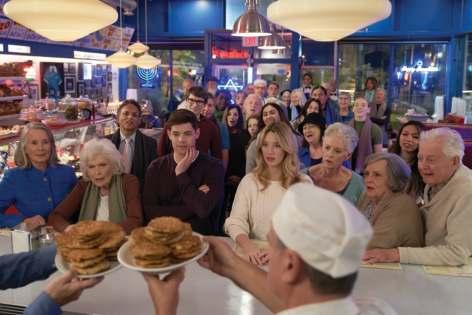



 INBAR LAVI (Sara Levin)
A matchmaker connects two Jewish deli owners, which sounds perfect until it turns out they’re going to be competing with each other on New York’s Lower East Side. Lisa Loeb also turns up to sing, because she can. (Filmed in Winnipeg) n
JEREMY JORDAN (Jacob)
YAEL GROBGLAS (Molly)
CARLY POPE (Rebecca Hoffman)
INBAR LAVI (Sara Levin)
A matchmaker connects two Jewish deli owners, which sounds perfect until it turns out they’re going to be competing with each other on New York’s Lower East Side. Lisa Loeb also turns up to sing, because she can. (Filmed in Winnipeg) n
JEREMY JORDAN (Jacob)
YAEL GROBGLAS (Molly)
CARLY POPE (Rebecca Hoffman)

Mark Ulster salvaged everything he could grab from his family’s downtown Toronto movie theatre—and he’s spent the past 30 years contemplating the Jewish legacy represented by a pile of posters.
Ben Ulster, Mildred Ulster, Dave Draper (bodybuilder and co-star of Don’t Make Waves, the film shown at the opening of the 7 & 27 Drive-In), Philip Ulster (Ben’s cousin) and Shirley Ulster (Philip’s wife) in Toronto in 1967.

“The Jews control Hollywood.”
It’s a conspiracy theory that never seems to die—and lately it’s taken on new life.
But while it can be an offensive and dangerous trope, it contains an element of historical truth.
After all, once upon a time, it was guys like William Fox, Samuel Goldwyn and the Warner Brothers who built what we now know as “Hollywood.”
And when I think about the link between Jewish immigrants from Eastern Europe and the film business, I always think of my own family and our century-long history with the movies. But this is a story that belies the myth of inborn Jewish privilege, power and control.
My great-grandfather Sam Ulster (Elster) was born in 1894, just outside of “Chenstochov” (now Czestochowa, Poland). When he came to Toronto, alone, he had $6 stitched into the lining of his coat, and he didn’t speak a word of English.
But he got into the movie theatre business before the talkies—and then he got lucky during the Great Depression.
At a time when people in more conventional and “respectable” occupations were crushed, the appetite for escapism meant a lot of folks in the cinema business got rich. By the 1940s, Sam was the No. 2 guy at the exhibition company known as Twentieth Century Theatres. He ran first-run screens in cities like Peterborough and Ottawa, along with the Embassy on downtown Yonge Street, which is still standing as the CAA Theatre.
My grandfather Ben followed in his father’s footsteps, managing theatres for Nat Taylor—who later co-founded Cineplex—and Twentieth Century, before becoming an owner in his own right. And he founded the 7 & 27 Drive-In, which operated from 1967 to 1997.
By the late 1970s, when downtown Yonge Street was at its seediest peak, he owned some of the staples of the Strip: Ford Drugs, located next door to the Zanzibar Tavern, and Lindy’s Steakhouse up the road.

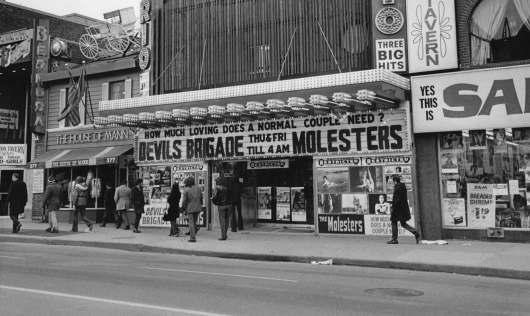
He also owned the last theatre in Ulster family history, at 373 Yonge, south of Gerrard Street. The Rio.

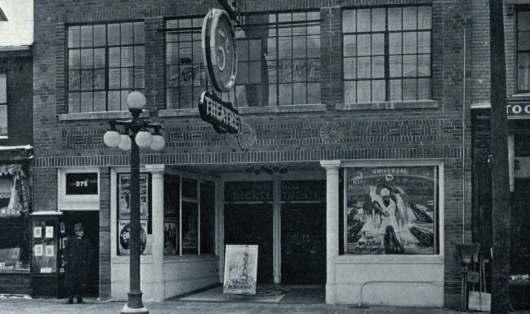
It opened in 1913 as a nickelodeon called the Big Nickel, and the building cycled through several names before my grandfather took it over in the early 1940s. Three decades later, it was entrenched as one of the three “grindhouses” of the Yonge Street Strip, sitting between the Coronet and the Biltmore.
The Rio ran three or four “big hits” every single day. And, for the price of one admission ticket, you could see them all! But competition meant having to get creative in attracting audiences, with big, bold marquees, bright lights—and splashy movie posters that could be more salacious than anything on-screen.

But beyond the foreboding “Restricted” key hanging under the marquee to curb anyone under 18 from darkening its door, the Ontario Censor Board was there to protect Toronto audiences from certain filth creeping in from south of the border, even if that meant some movies lost half their celluloid to the scissors.





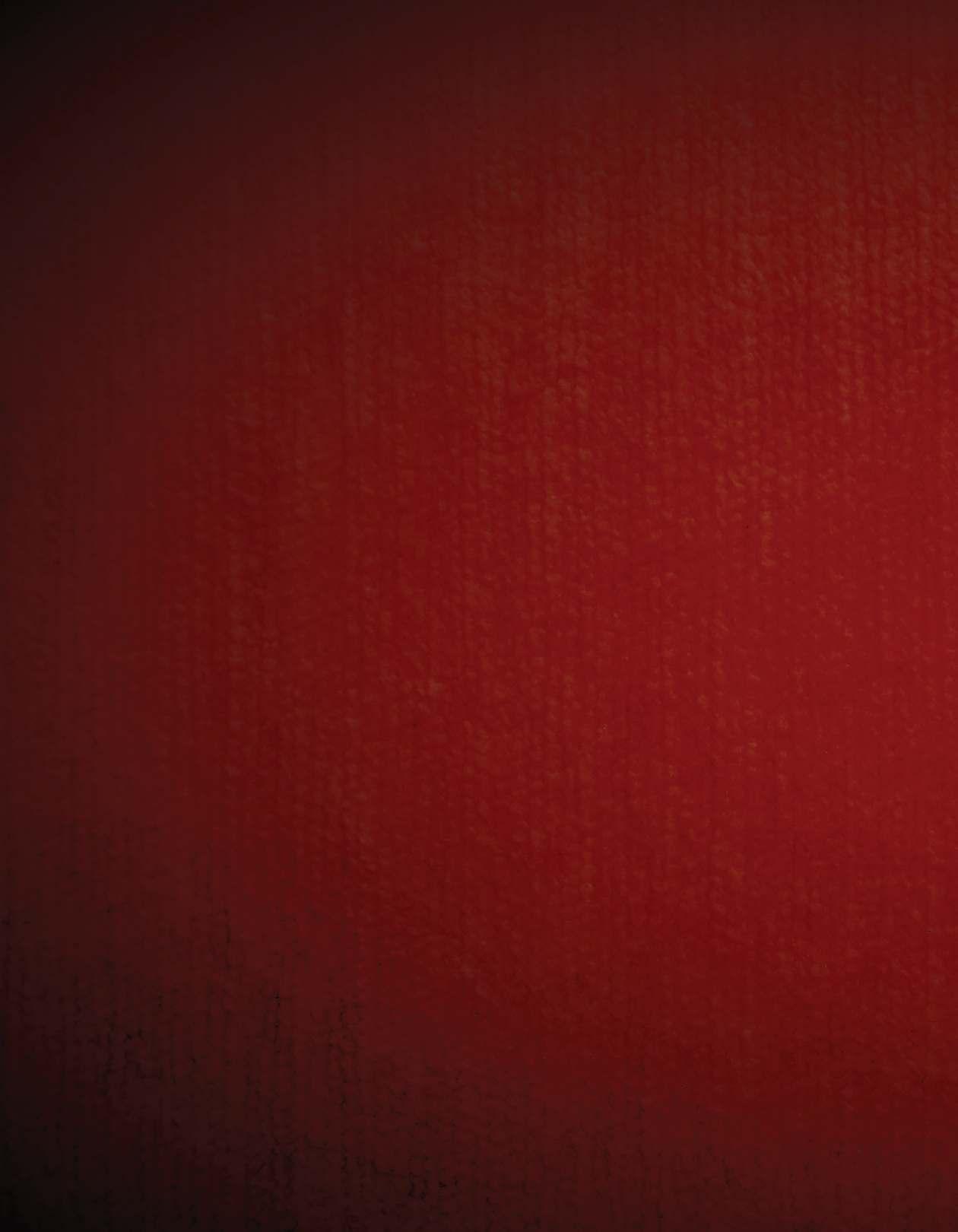
Six picks from Mark Ulster’s collection capture what his family’s second-run cinema screened in the 1970s and ’80s.

Ben Ulster meticulously programmed every bill at the Rio, and the movies changed every two or three days. One lineup featured A Hard Man’s Good to Find on the same bill as Cecil B. DeMille’s version of the Book of Exodus.



What seemed to have no value when it was salvaged from the Rio in 1991 turned out to be a rare one-sheet for a film by notorious director Russ Meyer, whose studio was unique in printing its very own posters.
The legendary grindhouse director Andy Milligan made this film—which apparently no longer exists in any form. And the poster is almost as rare, which is why it’s the only one from the entire Rio collection that’s been archivally framed.

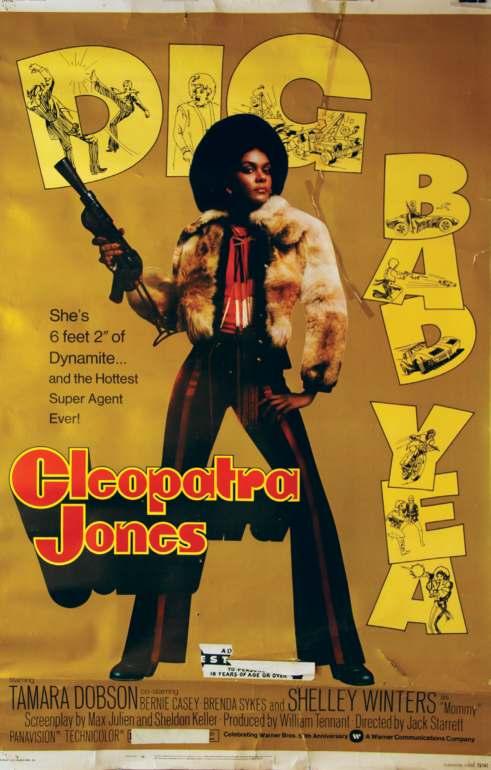
While most posters sent to movie theatres were standard-sized folded “one-sheets” measuring 27x41 inches, the occasional “40x60” was printed on thicker paper stock and rolled, ideal for the image of 6-foot-2 star Tamara Dobson.








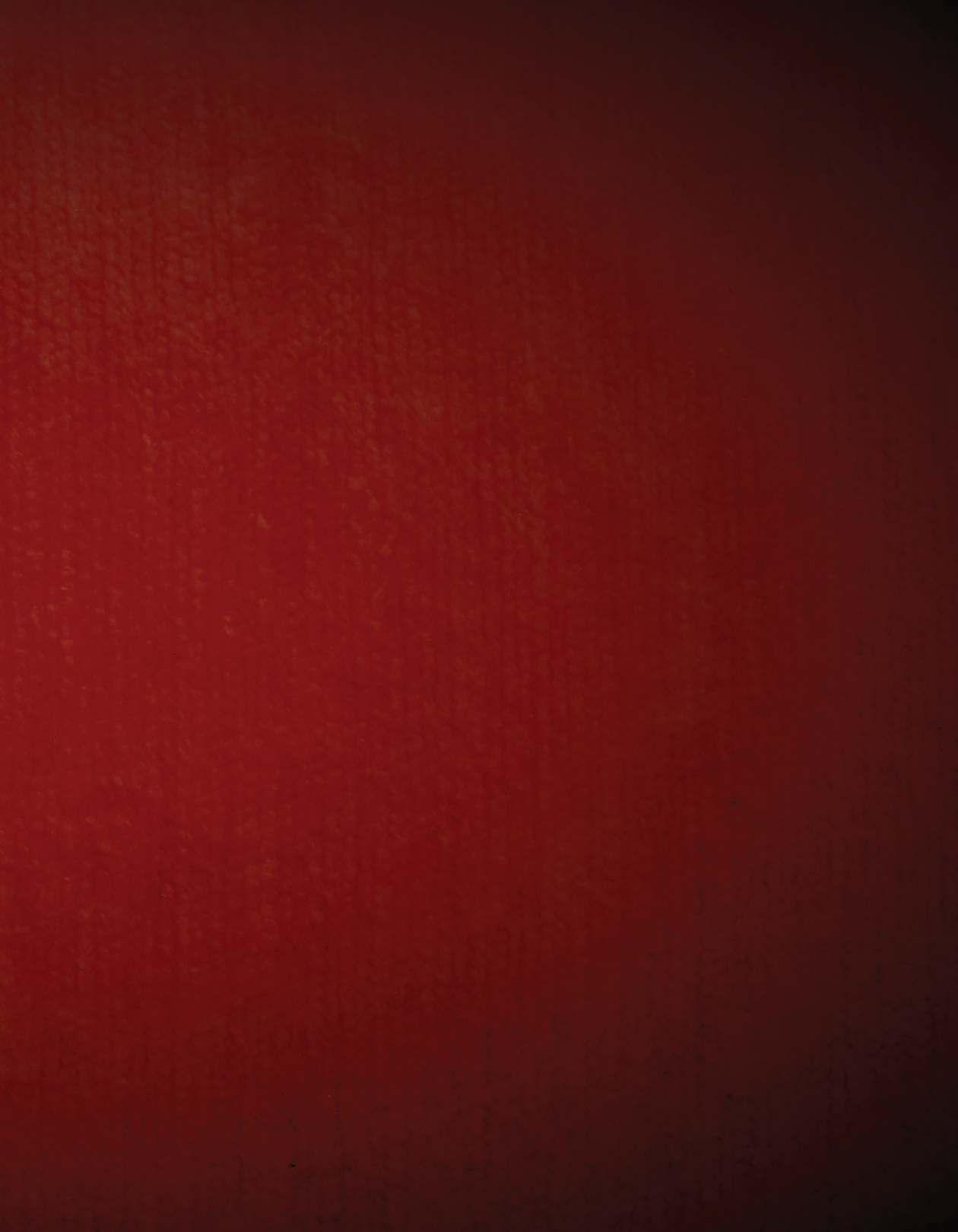
If this poster is to be believed, no woman was admitted alone to this British horror film, even though the policy wasn’t enforced. Besides, there were enough other reasons for women to want to steer clear of solo moviegoing at the Rio.


One of thousands of 14x7-inch “lobby cards” found at the Rio was for an obscure British crime drama directed by Robert Freeman, who was most famous for shooting five of the Beatles album covers between 1963 and 1966.

When my grandfather died in 1984, my grandmother Mildred—who celebrated her 103rd birthday in November 2022—took over Ben’s businesses, including the Rio. But this was a time when independent second-run theatres were dropping like flies, knocked out of business by the booming home video industry.

Still, the grindhouse survived as a symbol of the Strip during that decade, standing defiantly against the gentrification symbolized by the Eaton Centre.
You can see singer Corey Hart pouting past in his music video for “Never Surrender,” among countless other images of the era
when the garish signs of the pinball joints and Sam the Record Man gave Toronto a tiny perfect simulacrum of Times Square.
The Rio outlived the Coronet and the Biltmore, at least, but by 1991 my grandmother decided it was time to sell the business and the building. New owners would be taking over in November.
So, she asked me if I wanted to grab any of the posters that were accumulating for years, at least before she unloaded the lot for $1,000.
My wife Caroline and I, recently married, went to check out what was there. We were so shocked and amazed that we decided
to take all of it on the spot. With the help of four friends, we rented a truck and grabbed every piece of paper we could find: posters of every size, era and genre, logbooks with my grandfather’s notations, stationery—even the adult magazines that the projectionists had secret stashes of.
All of it took years to catalogue. We had no idea what we were going to do with it. Decades passed, as my grandmother continually asked about the haul and laughed, thinking we were strange to care so much about something with so little value.
We were slightly skeptical, too: six boxes were filled with posters we figured nobody would want, mostly sexpoloitation movies. Twenty-five years later, I pulled out one for a B-movie called Lorna, directed by Russ Meyer, and I found it selling online for over a thousand bucks.
Today, the Rio is long gone—a victim of the condo explosion on the Yonge Street Strip, the spot belongs to a 95-storey development called Concord Sky. But the posters are still kicking online, as we add new scans to our social media archive whenever inspiration strikes.
Sure, our kids would be happier if we turned it all into cash—and I’ve apologized to them several times in advance—but they’re going to inherit a lot of cinematic art when we’re gone. And the legacy of a family that was proud to run a grindhouse. n
For more archival images from the Rio: @RioMoviePosters on Facebook and Instagram, and @TheRioTheatre on Twitter.

The weekly edition of The Canadian Jewish News is designed for offline reading on Shabbat and weekends—easily downloaded for printing at the office or at home. Make copies for family and friends missing the newspaper experience, run off as many as you want to share with members of your organization, or leave it on the table for everyone to discuss. (You can also easily flip through the latest collection on any digital device.) Get on the insider email list, with the links you need to see each issue first, by joining us now in The CJN Circle
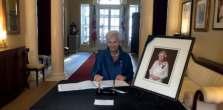


















































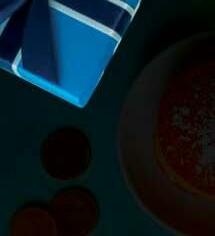














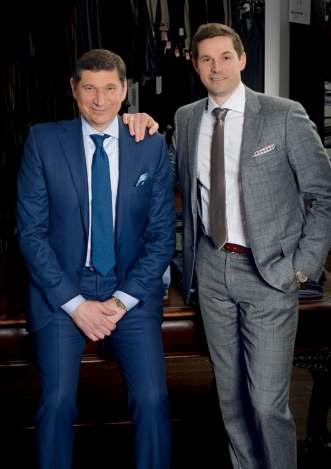
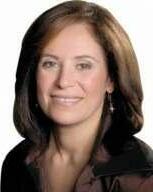
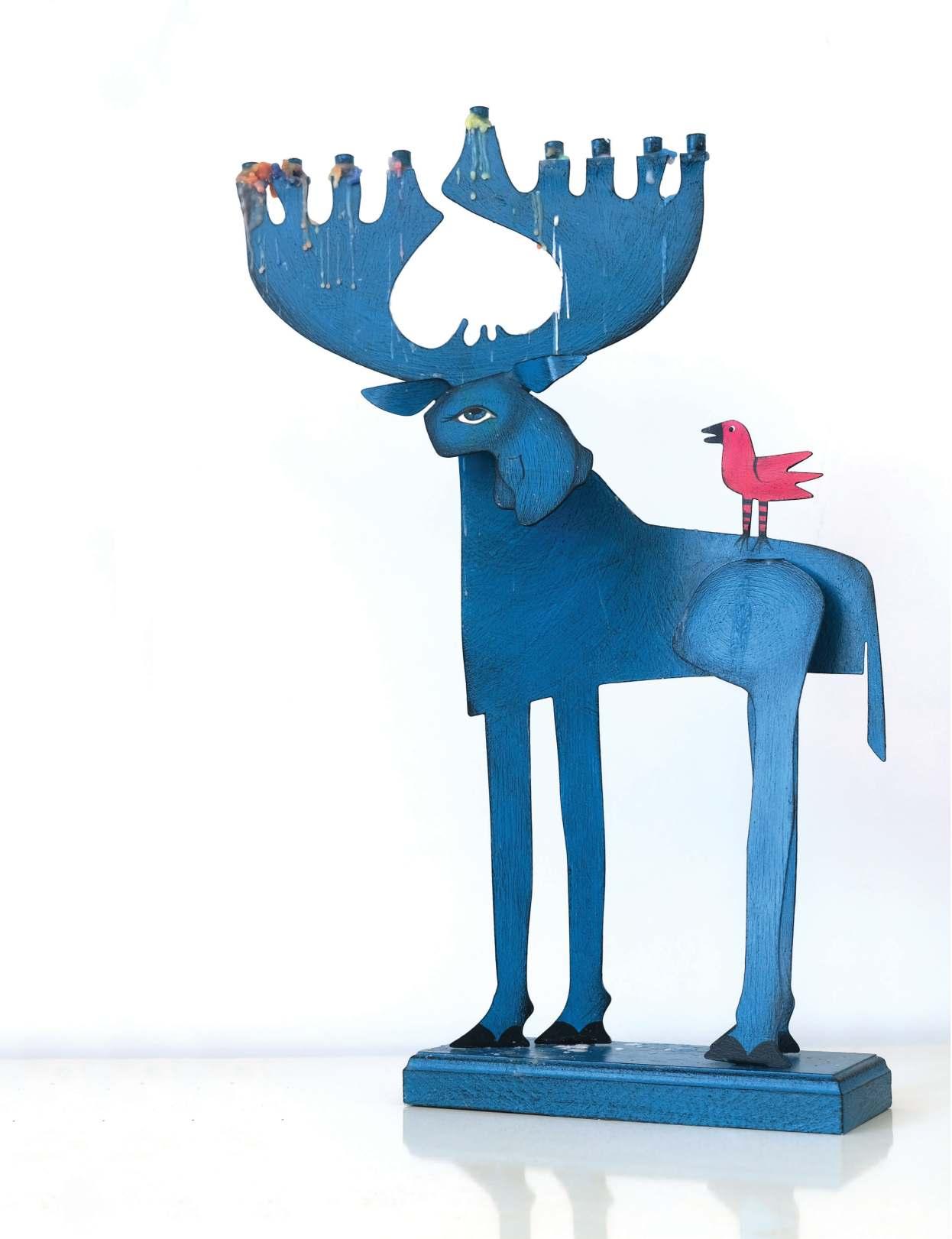
Hearing about demand for unique menorahs at a 2002 gift show in Philadelphia led Toronto artist couple Sue Park and Don Gidley to explore making ones from their company, Acme Animal. The initial idea involved incorporating candleholders into the antlers of a moose—which was already a staple of Acme’s other offerings. It proved popular enough to inspire metal menorahs shaped like a whale, a giraffe, a dog, a cat, a tree of life and Noah’s Ark. Acme relocated to London, Ont., where handcrafting is now handled by Nancy Clarke. The Canadian Jewish News adopted the Moose Menorah for the cover of our 60th anniversary book, Northern Lights, published in 2020. Subsequently, the Moose Menorah became the avatar for the rebirth of The CJN—and our own is lovingly pictured on this page, with the wax drippings to prove that it’s being used. Happy Hanukkah!
Donate to The Canadian Jewish News today at thecjn.ca/support or email support@thecjn.ca

The CJN’s sports podcast can come at you live

The world’s most popular Jewish sports podcast hosts James Hirsh and Gabe Pulver are now available for speaking appearances with Toronto-area community groups, in any kind of classroom, or as part of your weekend bagel brunch. Check out their latest audio conversations along with contact information at thecjn.ca/menschwarmers

